This page lists some of the many maker’s marks found on antique Japanese porcelain and ceramic objects including Arita porcelain, Kutani porcelain, Seto porcelain, Satsuma pottery and others. Listed are also some vintage and modern Japanese porcelain marks. We regularly update this page.
Last updated: November 2025
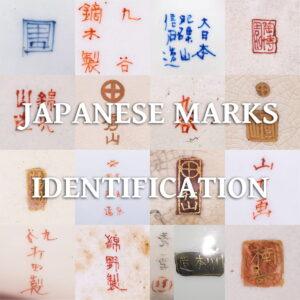
Need more help?

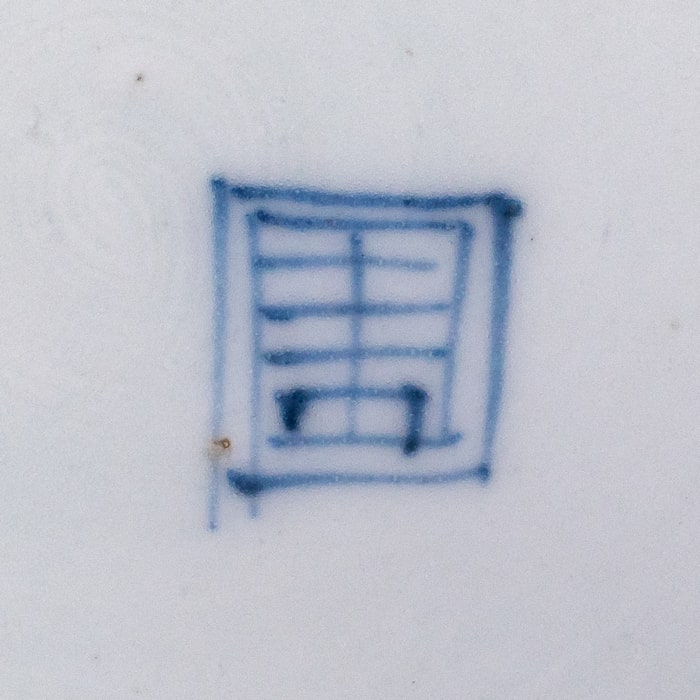
Aoki Brothers – Porcellana Aoki Kyodai-Shokai Arita contrassegnata con 青 in blu sottosmalto
See examples on eBay →
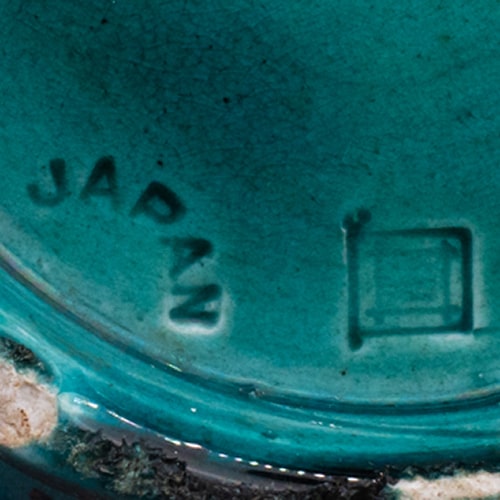
Awaji pottery (Sanpei kiln) – Impressed rectangular Sanpei flag accompanied by the word JAPAN. Variation used during the Meiji and Taishō period, c. 1890-1922.
See examples on eBay →
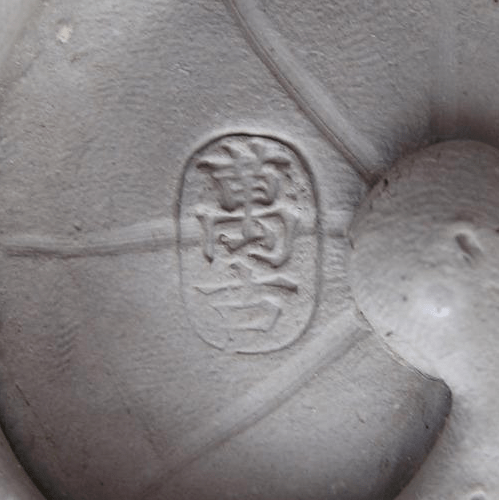
Banko ceramica - sigillo ovale impresso che recita 萬古 'Banko'. Meiji, Taishō e successivi
See examples on eBay →
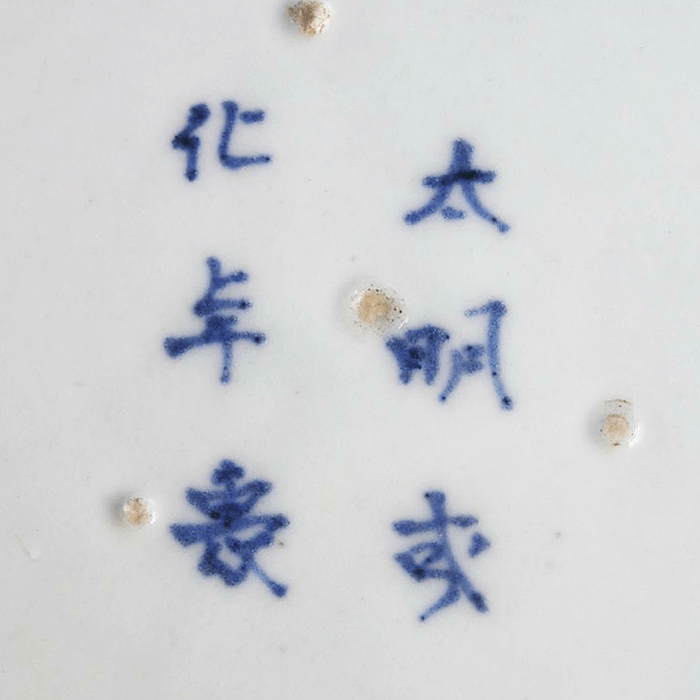
Chenghua - marchio apocrifo del regno di Chenghua a sei caratteri in stile cinese 太明成化年製 'Tai Ming Chenghua Nian Zhi' o 'Daimin seika nensei' in giapponese. Si trova spesso su porcellane Imari Arita.
See examples on eBay →
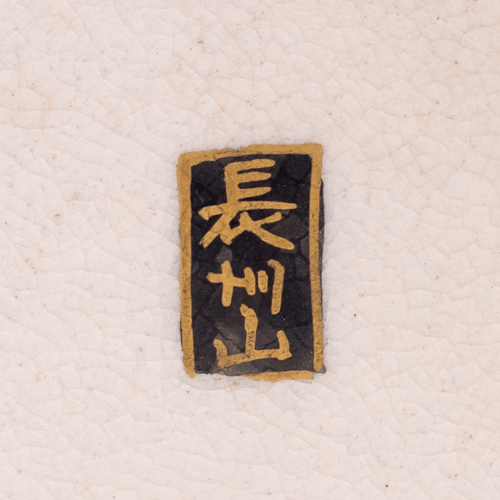
Choshuzan – Ceramica Satsuma contrassegnata in oro su sfondo nero 長州山 'Choshuzan', a volte anche solo 長州 'Choshu'; periodo Meiji
See examples on eBay →
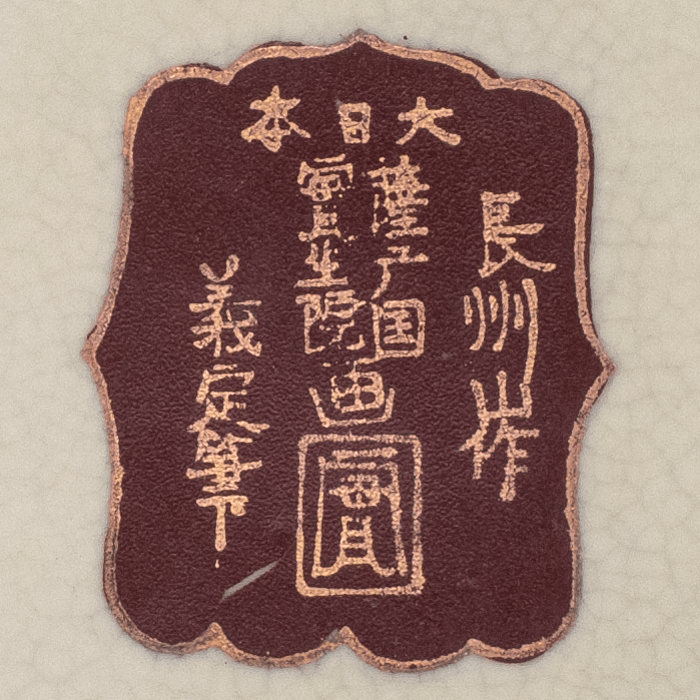
Choshuzan – satsuma style pottery inscribed 大日本 ‘Dai Nippon’ 長州山作 ‘Choshuzan saku’ 薩广国 實生院画 ‘Satsuma kuni Mibae-in ga’ 義定筆 ‘Yoshisada hitsu’ – Great Japan, Choshuzan workshop, painted by Mibae-in (sometimes also read as Jissei-in, possibly a studio name?) after a design by Yoshisada.
See examples on eBay →
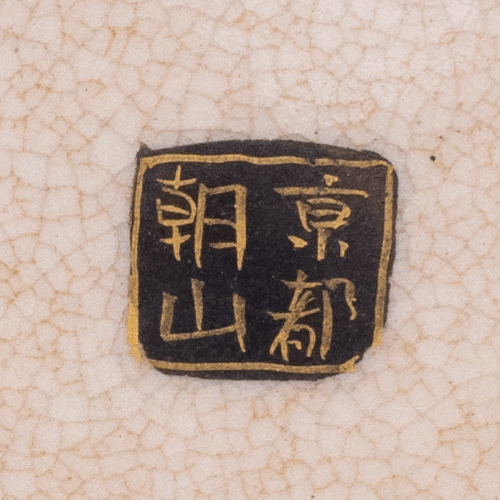
Chozan – Ceramica satsuma contrassegnata in oro su sfondo nero 亰都朝山 'Kyoto Chozan' (lettura alternativa 'Kyoto Asayama'); Periodo meiji
See examples on eBay →
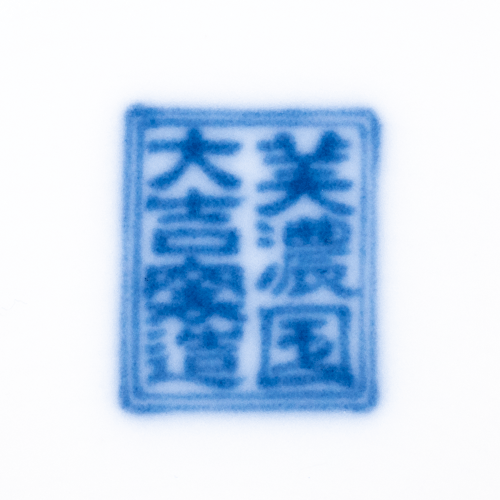
Daikichi kiln – underglaze blue rectangular seven-character mark that reads 美濃国 大吉窯造 ‘Mino nokuni Daikichi gama zō’ – Mino province, Made by Daikichi kiln
See examples on eBay →
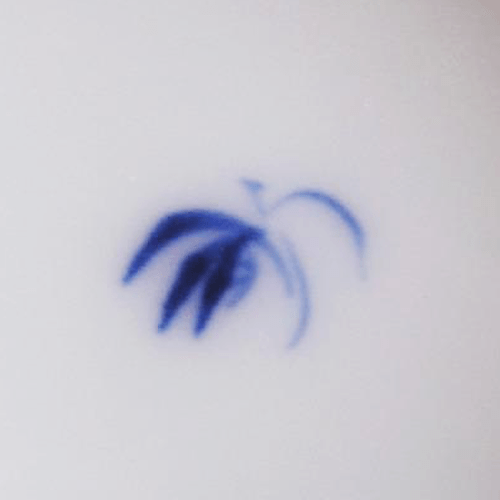
Fukagawa Koransha – simbolo dell'orchidea (koransha che significa 'stile orchidea') utilizzato dal 1870 (periodo Meiji) fino ad oggi
See examples on eBay →
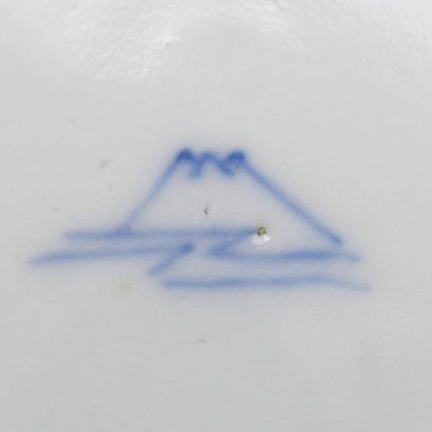
Fukagawa Seiji marchio raffigurante il Monte Fuji e un fiume – utilizzato dalla fondazione dell'azienda nel 1894 e per tutto il XX secolo.
See examples on eBay →
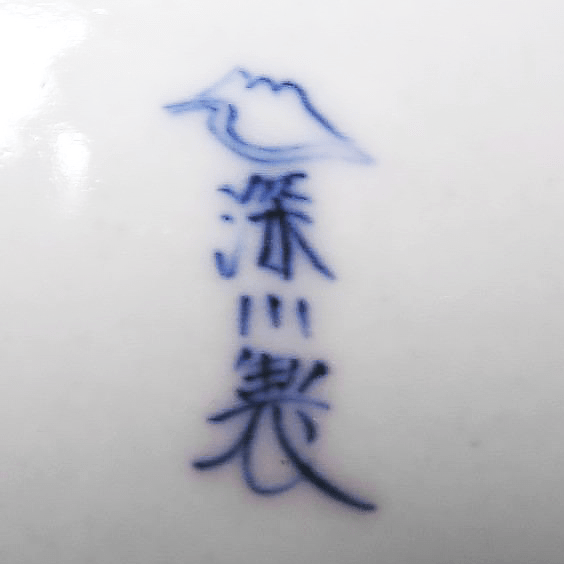
Fukagawa Seiji – marchio alternativo con Mt. Fuji e iscrizione 'Fukagawa Sei' 深川製 (fatto da Fukagawa). Inizio del XX secolo, periodo Meiji - Taishō
See examples on eBay →

Fuki-Chosun mark 冨貴長春 (ricchezza, nobiltà, longevità e giovinezza) - augurio di buona fortuna e lunga vita che si trova sulla porcellana Imari. Periodo Meiji – Taishō
See examples on eBay →
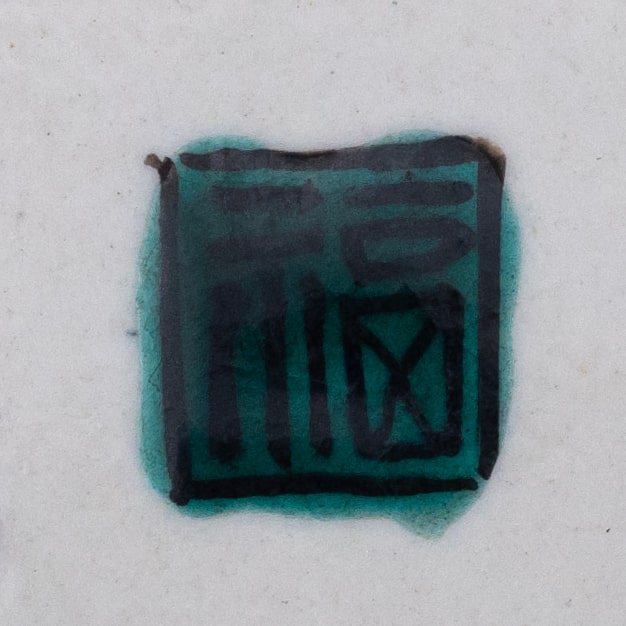
Fuku marchio 福 (felicità o buona fortuna) che si trova su porcellane e ceramiche di Kutani. Utilizzato da vari studi e decoratori.
See examples on eBay →
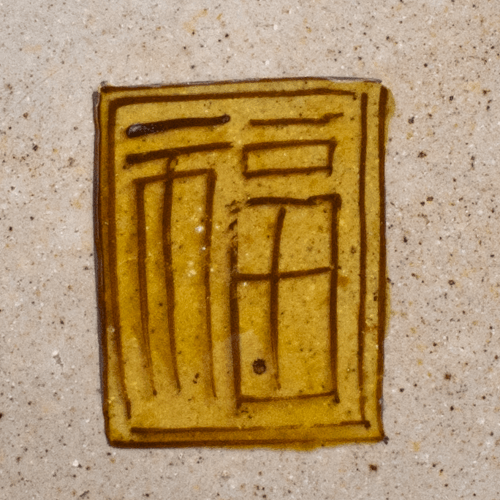
Fuku 福 – another version of this mark, this time with yellow background. Found on Edo period Yoshidaya style Aode Kutani charger.
See examples on eBay →

Fukumoto Eitarō (福本榮太郎) – Porcellana hirado marchiata 平戸産福本造 'Hirado-san Fukumoto-zō' – Prodotta a Hirado da Fukumoto. Periodo Meiji
See examples on eBay →
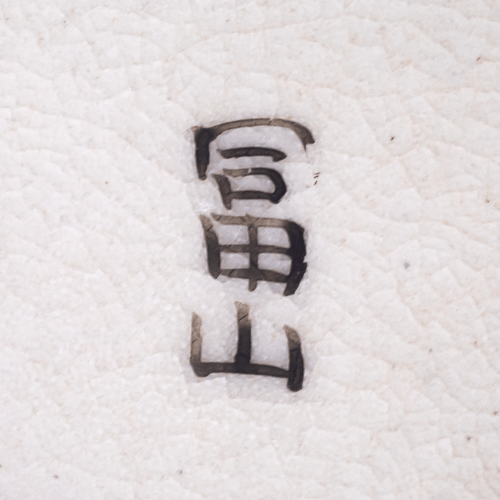
Fuzan – vaso Satsuma in miniatura con fondo blu cobalto marcato 'Fuzan' 冨山. Meiji - Periodo Taishō
See examples on eBay →
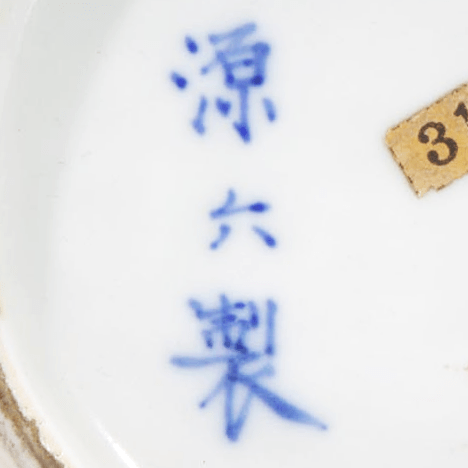
Genroku – Tominaga Genroku 富永源六 (1859-1920), fondatore di Genroku-yaki a Ureshino, prefettura di Saga. Il segno blu sottosmalto recita 'Genroku sei' 源六製 (Prodotto da Genroku).
See examples on eBay →
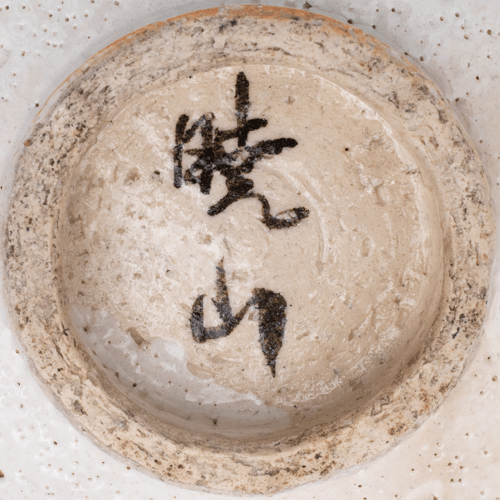
Gyozan – Okada Gyōzan 岡田曉山 – mark found on Kenzan style pottery. Also produced Ninsei style pieces and other Kyoto Satsuma ware. Early 20th century.
See examples on eBay →

Hattori – fine quality Satsuma pottery marked 服部之造; late 19th – early 20th c., Meiji period
See examples on eBay →
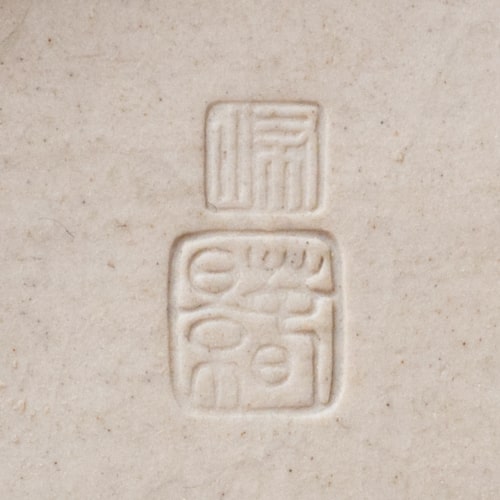
Harukage / Fuzan Yutaro – Banko ware stamped 布山 (Fuyama/Fuzan) and 春景 (Harukage) which are the marks of Fuyama/Fuzan Yutaro 布山 由太郎 (born in Mino Province in 1836). He was a master of the potter’s wheel and also skilled in hand-twisting, wooden mould making, and tatami construction. He died in 1912 at the age of 77.
See examples on eBay →
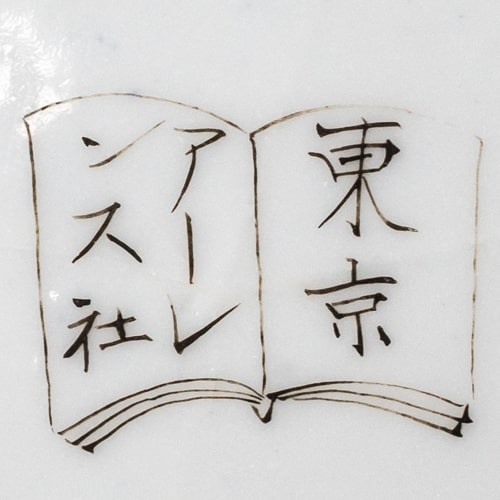
Heinrich Ahrens & Co. – founded in Tokyo in 1869, shortly after the Meiji Restoration, by a German/Prussian entrepreneur Heinrich Ahrens (died in Yokohama on October 18, 1886). Book-shaped mark which reads 東京 アーレンス社 ‘Ahrens Co., Tokyo’. Another mark used by the company was a hat-shaped iron red mark with inscription アーレンス社 築地41 ‘Ahrens Co., Tsukiji 41’ which was the address of their new premises from 1871. Company later in 1872 opened another branch in Yokohama and in 1876 in Kobe.
See examples on eBay →

Hichozan Shinpo – Porcellana Decorata arita imari marchiata 'Hichōzan Shinpo zō' 肥碟山信甫造; Periodo edo-Meiji; guarda anche Tashiro Monzaemon sotto
See examples on eBay →
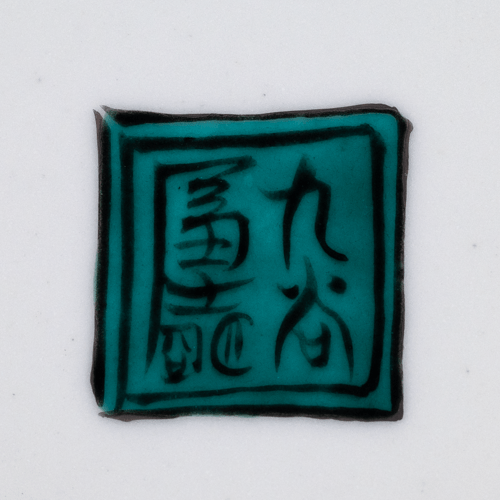
Higashi Fujiaki (東富士明, b. 1928) – Porcellana kutani con segno quadrato su fondo blu-verde che recita 九谷 富士明 ; 20 ° secolo
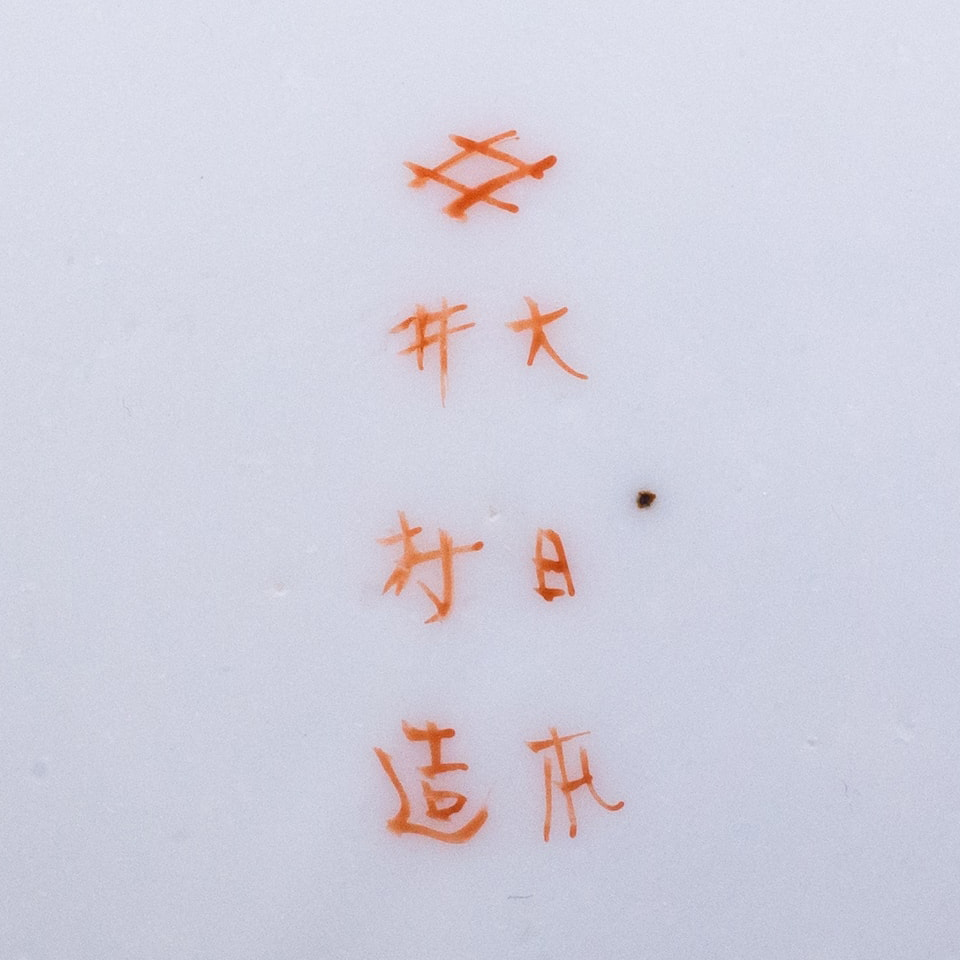
Hikojiro Imura “Dai Nippon Imura Zo” 大日本井村造
See examples on eBay →
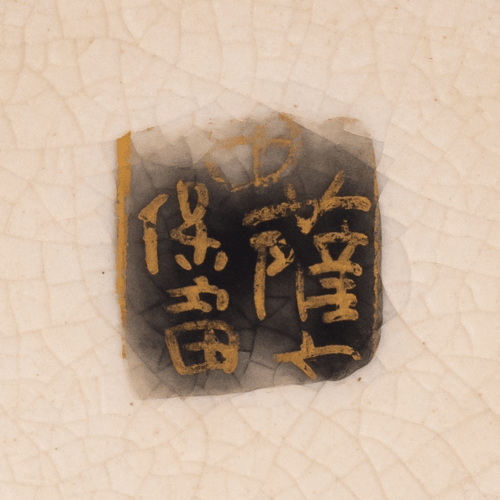
Hododa – marchio di ceramica Satsuma 'Satsuma Hododa' 薩广 保土田 dove 薩广 è semplificato 薩摩; Periodo Meiji
See examples on eBay →
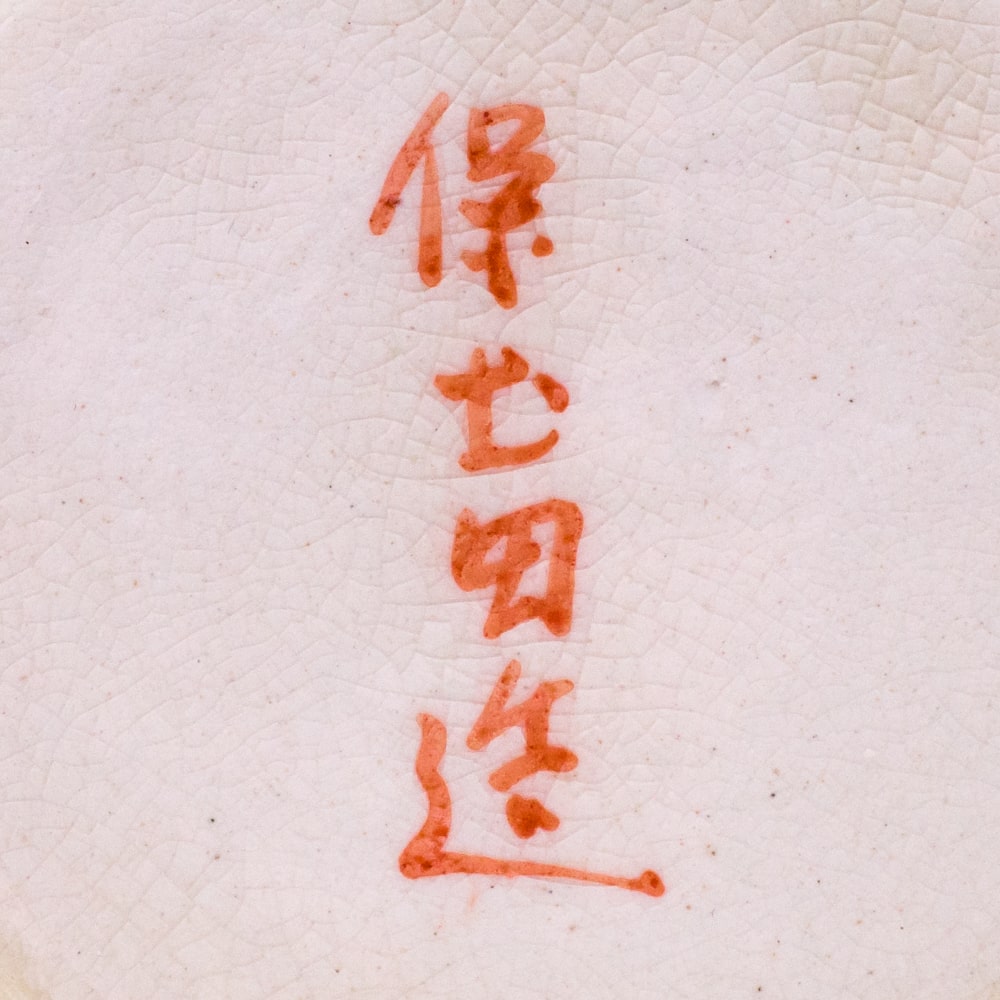
Hododa – marchio satsuma Rosso ferro 'Hotoda Zo' 保土田造
See examples on eBay →

Hori Tomonao (1827-1894) -19th century Banko ware with stamps that read 萬古 ‘Banko’ and 堀友直造 ‘Made by Hori Tomonao’.
See examples on eBay →
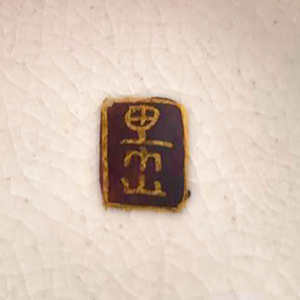
Ichizan – Ceramica Satsuma contrassegnata con 'Ichizan' 市山 e con sopra il mon del clan Shimazu. Periodo Taisho
See examples on eBay →
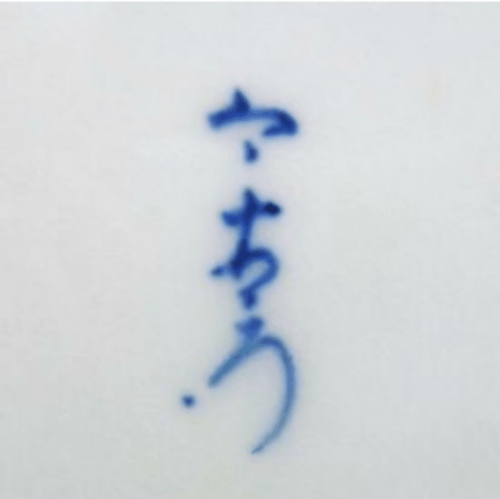
Imaemon – Imaizumi Imaemon 今泉今右衛門 – Porcellana Nabeshima (Iro-Nabeshima) marcata イマエモン 'Imaemon' (今右衛門); prodotto dalla metà del XVII secolo, periodo Edo fino ai giorni nostri (Imaizumi Imaemon XIV)
See examples on eBay →

Imura – alternative mark that reads “Nippon Yokohama Imura Sei” 日本横濱 井村製
See examples on eBay →
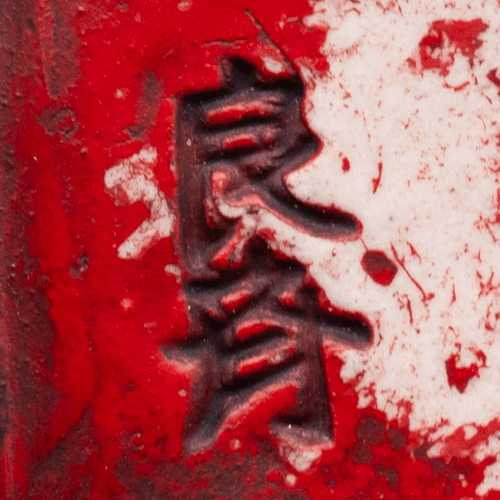
Inoue Ryosai 井上良斎 – Sumida Gawa pottery with impressed ‘Ryosai’ 良斎 mark; early 20th century
See examples on eBay →
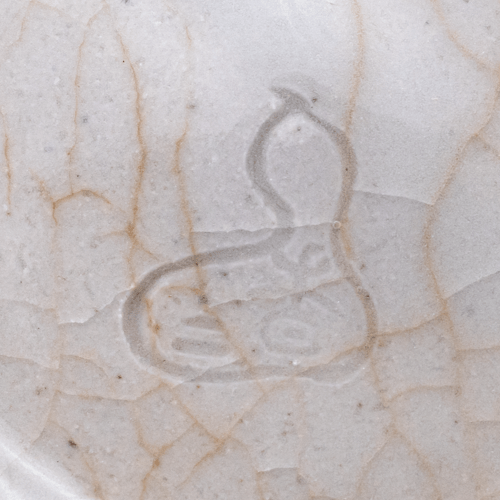
Ishiguro Koko 石黒香々 (or 石黒香香) – Sumida Gawa pottery with underglaze impressed mark 香二 inside a double gourd; sometimes incorrectly translated as Ban-ni; early 20th century
See examples on eBay →
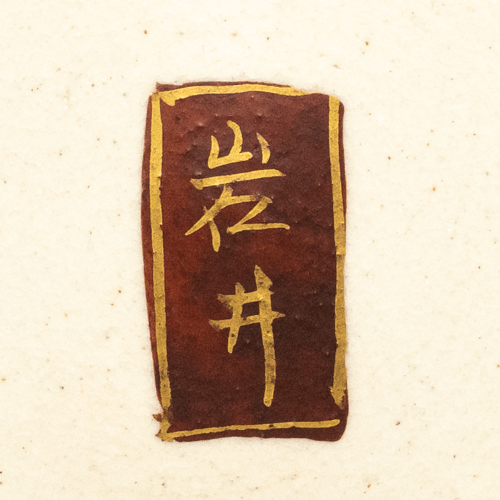
Iwai – Iwai Hakuzan 岩井白山 – satsuma pottery mark 岩井 ‘Iwai’; early 20th century
See examples on eBay →
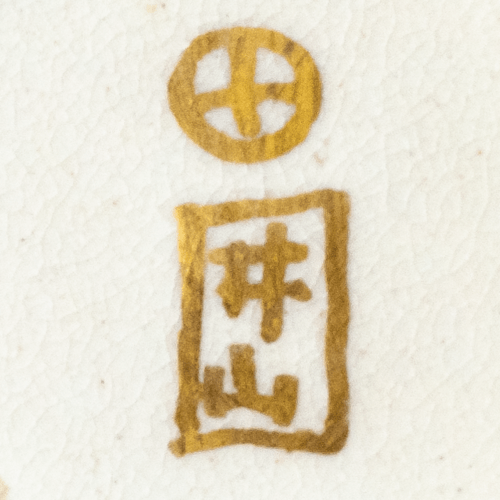
Iyama – satsuma pottery mark 井山 ‘Iyama’; early 20th century, Meiji-Taishō period
See examples on eBay →
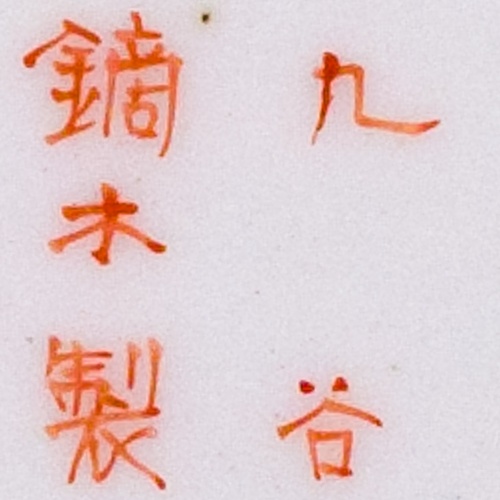
Kaburaki “Kutani Kaburagi Sei” 九谷 鏑木製 – fondata da Jisuke Kaburaki nel 1822 (Kanazawa)
See examples on eBay →

Kaburaki – alternative mark that reads 加賀 九谷 鏑木製造 ‘Kaga (former province) Kutani, Made by Kaburaki’
See examples on eBay →
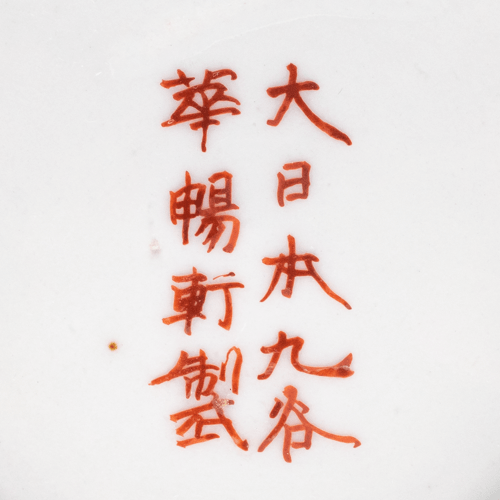
Kachoken – Porcellana Kutani contrassegnata dal segno rosso ferro a nove caratteri 大日本九谷華暢軒製 (Great Japan Kutani, Made by Kachoken) – compare spesso su opere di Haruna Shigeharu (1847-1914); Periodo Meiji
See examples on eBay →
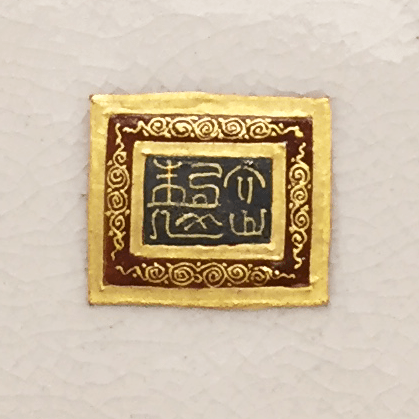
Kaizan – marchio di ceramica Satsuma stilizzato su fondo nero all'interno di un doppio bordo dorato. Legge 'Kaizan Sei' 介山製 (Prodotto da Kaizan); Periodo Meiji
See examples on eBay →
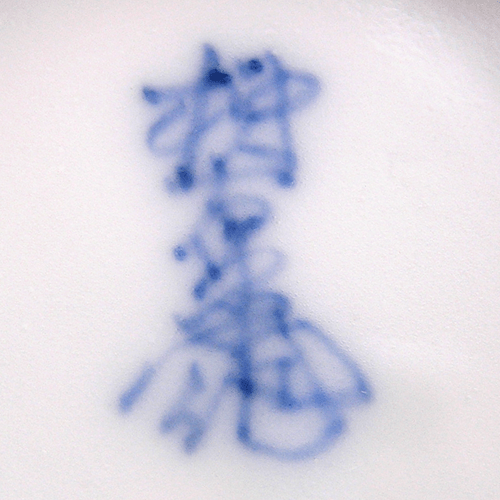
Kakiemon – this example of underglaze blue Kakiemon porcelain mark is by Sakaida Kakiemon XII (十二代 酒井田柿右衛門, 1878-1963), but very similar marks were also used by later generations.
See examples on eBay →
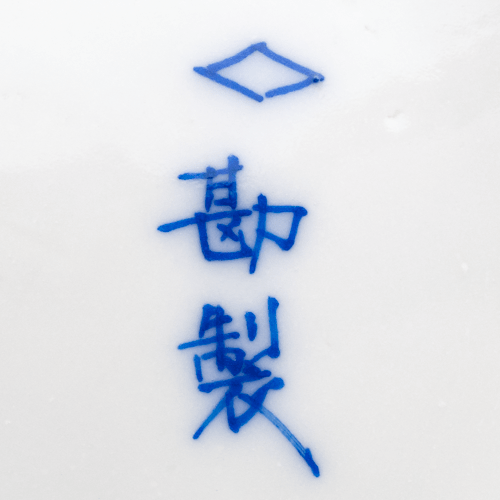
Kato Kanshiro 加藤勘四郎 – also known as Hishikan 菱勘. Underglaze blue Seto porcelain mark ◇勘製. Sometimes acommpanied by impressed underglaze oval mark ◇勘.
See examples on eBay →
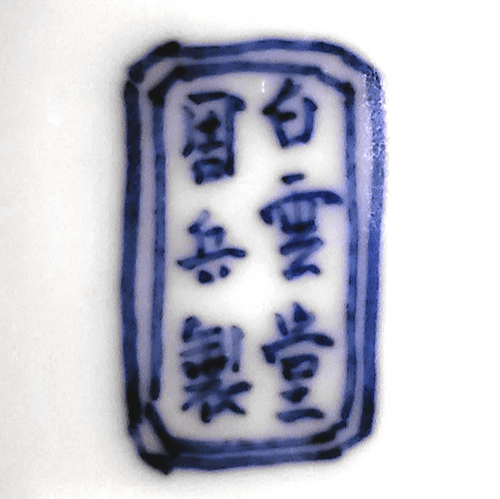
Kato Shubei II (1848-1903) – Seto ware mark that reads 白云堂 周兵製 ‘Hakuundo Shubei’; Meiji period
See examples on eBay →
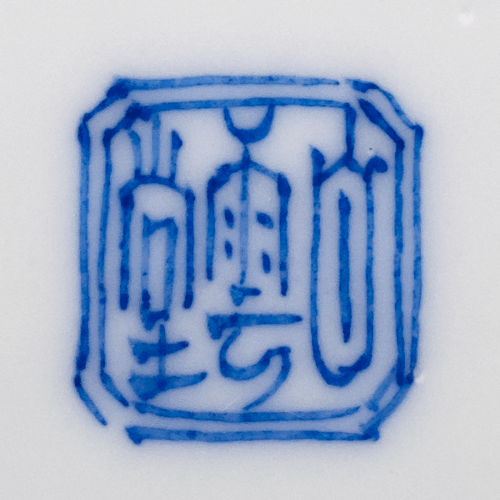
Kato Shubei II (二代加藤周兵卫, 1848-1903) – alternative underglaze blue Seto porcelain mark that reads ‘Haakundo’ 白雲堂 (right to left).
See examples on eBay →
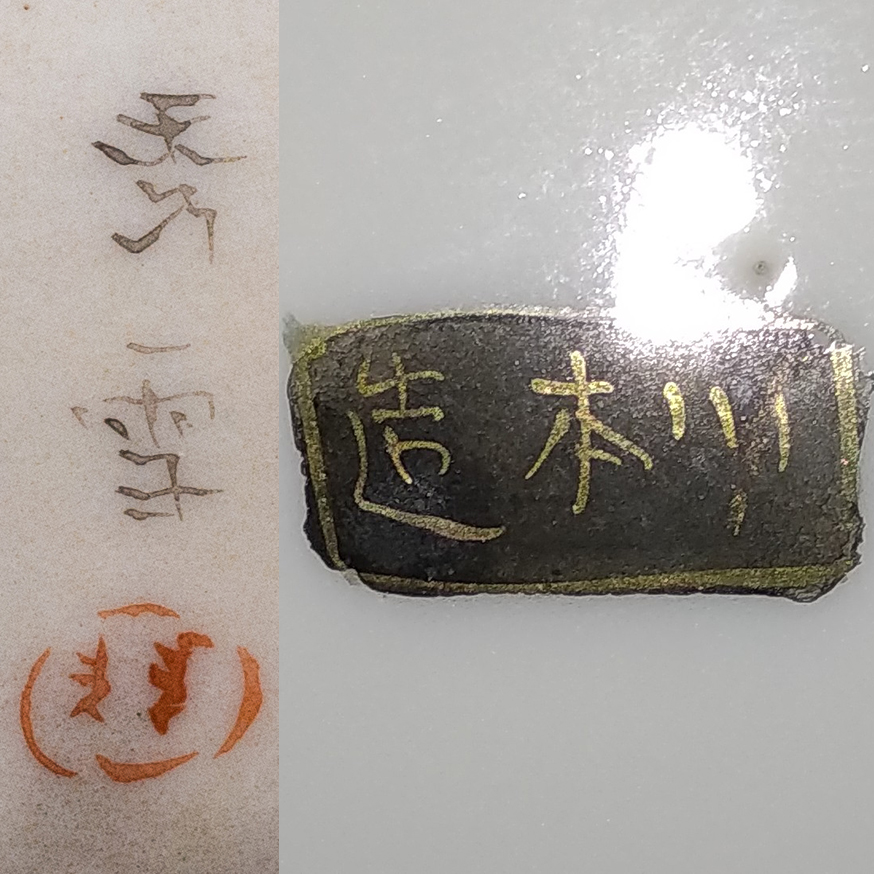
Kawamoto Masukichi II (二代 川本桝吉, 1852-1918) “Kawamoto Zo” 川本造. Artist name ‘Shusetsu’ 秀雪
See examples on eBay →
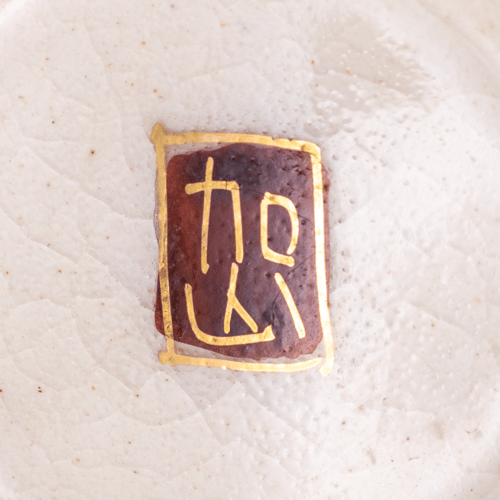
Kazan – Ceramica satsuma firmata 'Kazan' 加山; Periodo taisho
See examples on eBay →
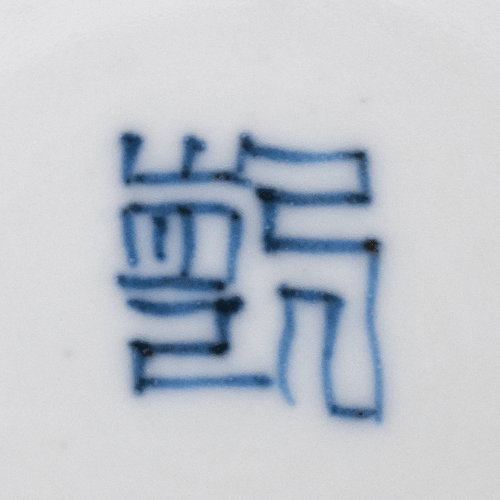
Ken o 'Qian' 乾 segno blu sottosmalto nella scrittura del sigillo cinese zhuanshu, generalmente considerato come l'imperatore Qianlong (乾隆)
See examples on eBay →
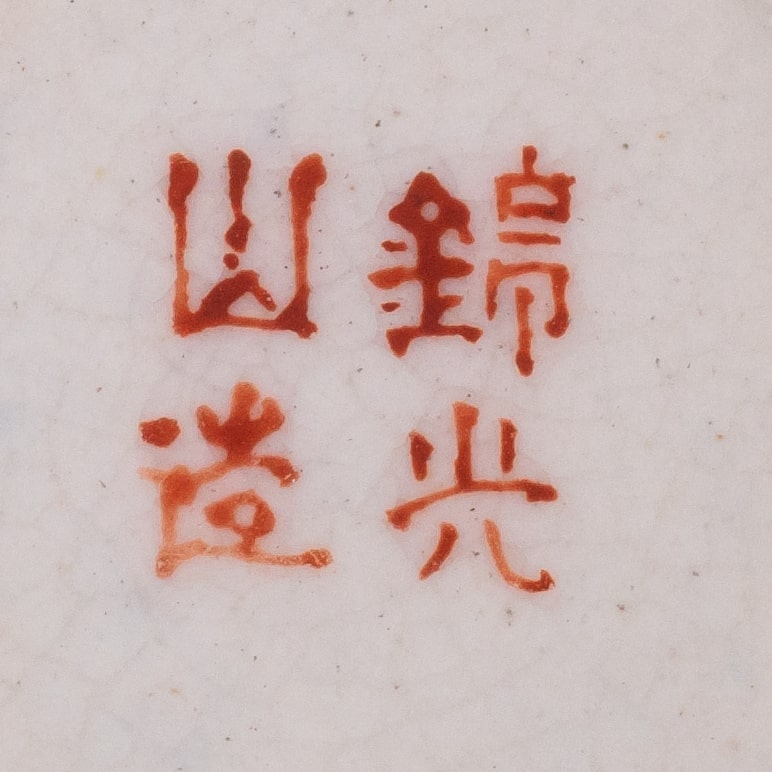
Kinkozan studio ceramica satsuma “Kinkozan Zo” 錦光山造
See examples on eBay →
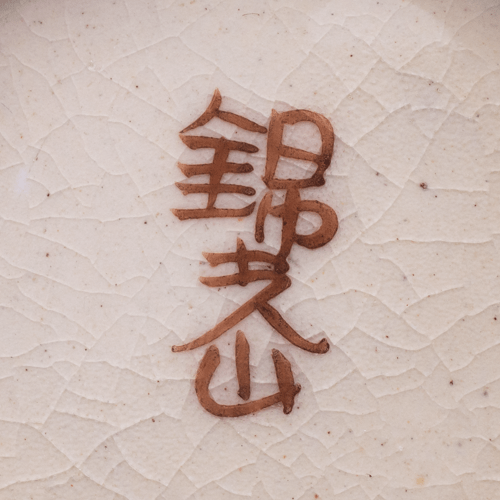
Kinkozan – un'altra versione del marchio satsuma sopra che recita semplicemente 'Kinkozan' 錦光山. L'aspetto del marchio dello studio Kinkozan può variare notevolmente in base al decoratore e alla qualità del pezzo. All'inizio del XX secolo.
See examples on eBay →
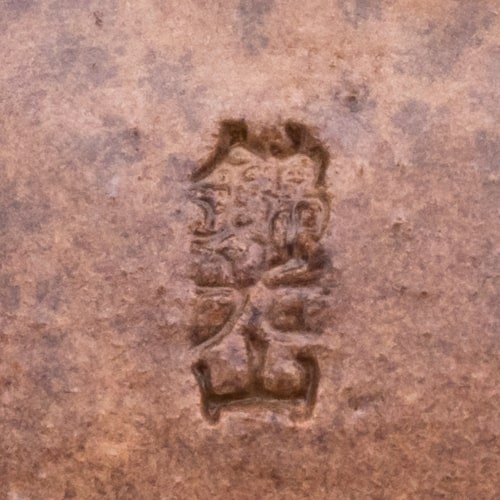
Kinkozan – underglaze impressed version of the Kinkozan Satsuma mark 錦光山. Early 20th century.
See examples on eBay →
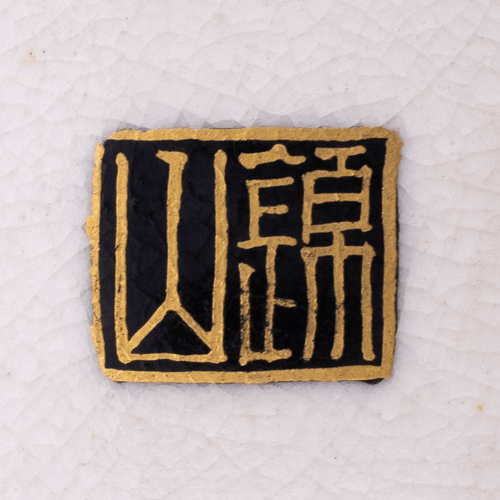
Kinzan ceramica satsuma contrassegnata con "Kinzan" 錦山 periodo Meiji - Taishō
See examples on eBay →
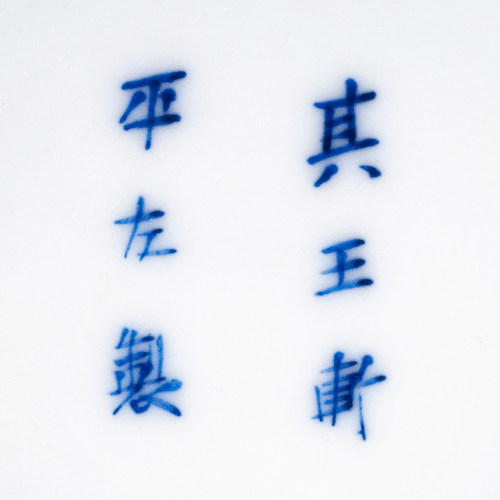
Kioken Heyza – segno blu sottosmalto di sei caratteri su porcellana Seto che recita 其王軒平左製 'Kioken Heyza sei'; Periodo Meiji
See examples on eBay →
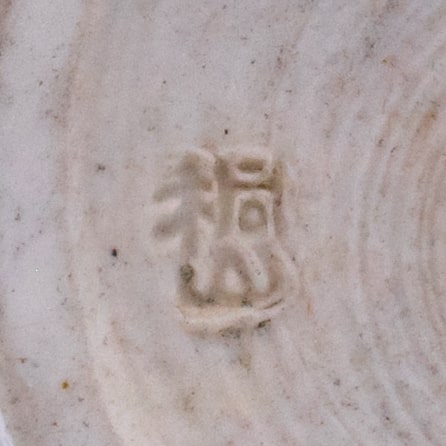
Kiriyama – stamped ‘Kiriyama’ mark 桐山 which belongs to Wada Kiriyama (和田桐山) of Kotoura kiln (琴浦窯)
See examples on eBay →
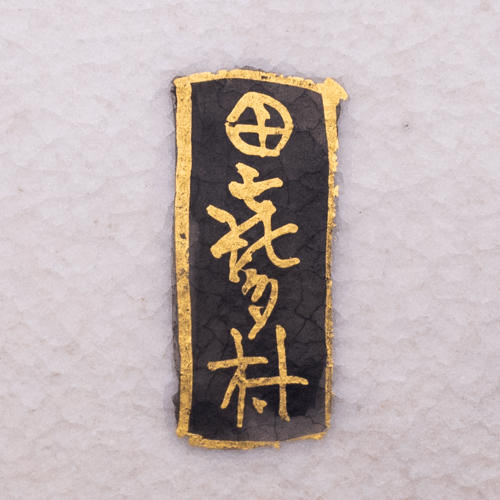
Kitamura Yaichiro 北村弥一郎 (1868-1926) – Satsuma pottery marked ‘Kitamura’ 喜多村 or 喜夛村
See examples on eBay →
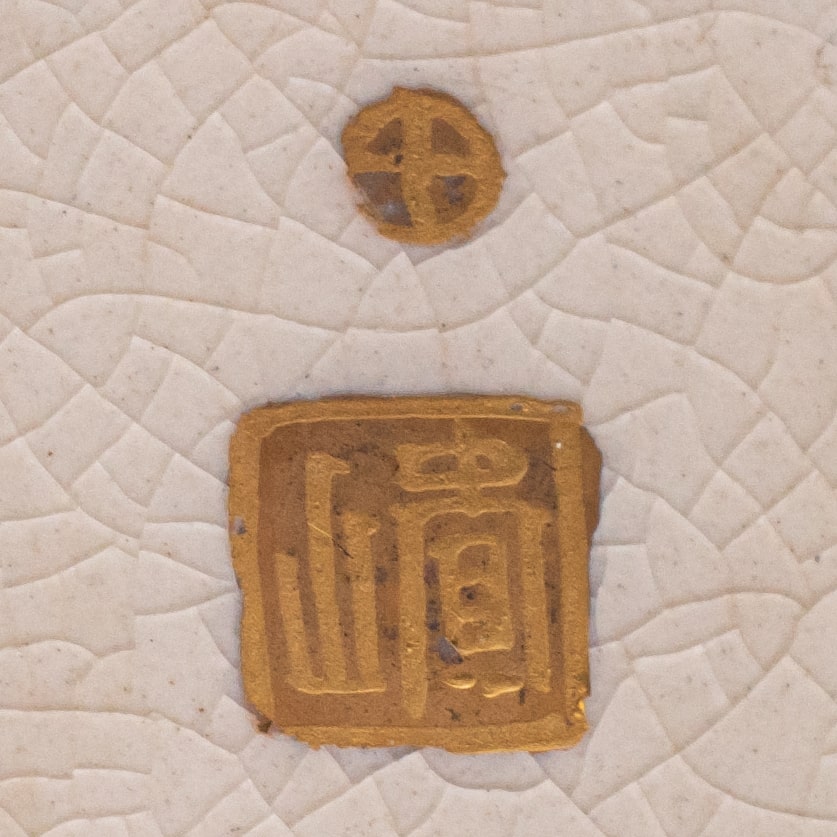
Kizan – Ceramica satsuma contrassegnata 'Kizan' 貴山 (Takayama)
See examples on eBay →
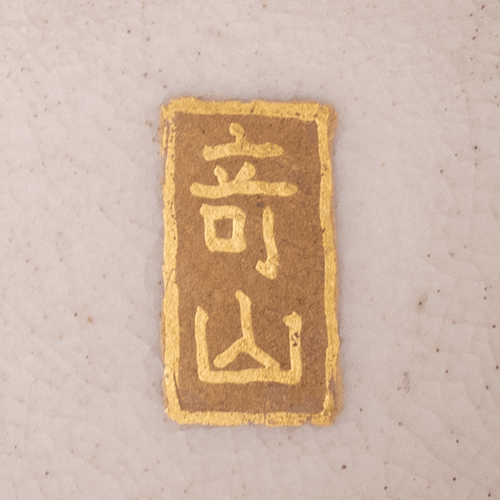
Kizan – marchio satsuma Rettangolare alternativo scritto come 竒山 'Kizan'; Meiji - Periodo taishō
See examples on eBay →
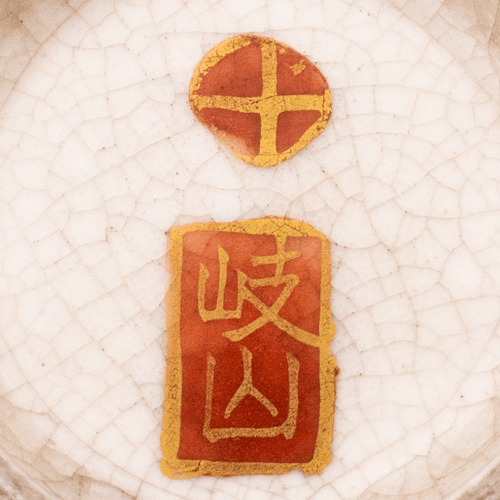
Kizan – rectangular gold mark on iron red background and with Shimazu crest above. 岐山 – Kizan or Gizan; Meiji period Satsuma pottery
See examples on eBay →
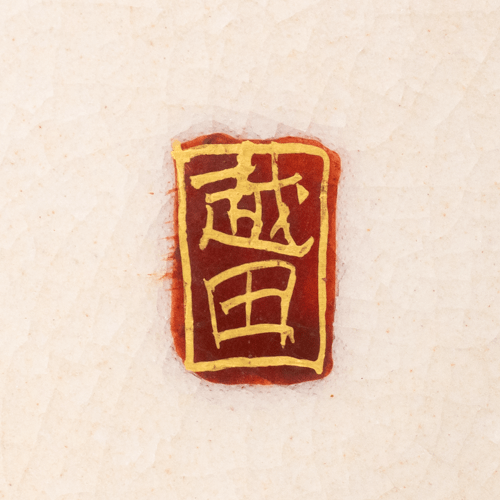
Koshida – rectangular gold mark 越田 on iron red background; early 20th century Satsuma pottery
See examples on eBay →
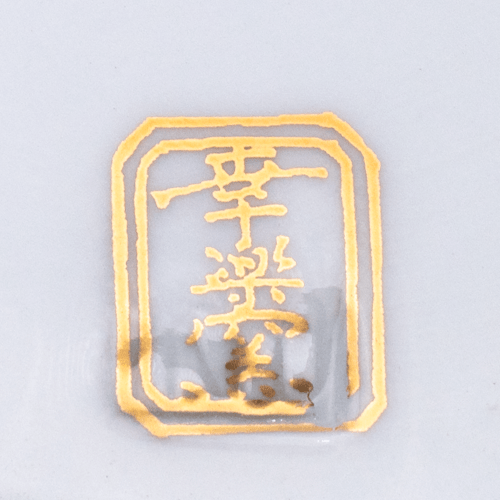
Kouraku kiln – modern Japanese porcelain marked 幸樂窯 ‘Kouraku gama’ with impressed stamp underneath
See examples on eBay →
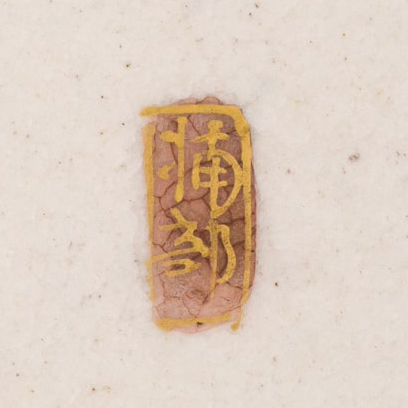
Kusube Sennosuke (1859-1941) “Kusube” 楠部
See examples on eBay →
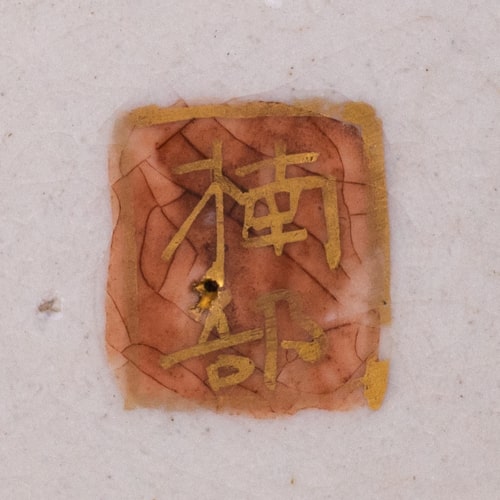
Kusube Sennosuke (1859-1941) "Kusube" Alternativo 楠部 Marchio satsuma
See examples on eBay →

Kusube – alternative “Kusube” 楠部 Satsuma mark in iron red either by Kusube Sennosuke or his son Kusube Yaichi (1897-1984). Often accompanied by stamped FOREIGN export mark; Taishō period
See examples on eBay →
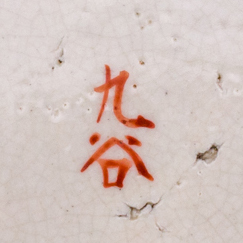
Kutani 九谷 – marchio generico su Porcellana e ceramica kutani-yaki
See examples on eBay →

Kutani 九谷 – underglaze blue Kutani mark written in stylized script and inside a double square border
See examples on eBay →
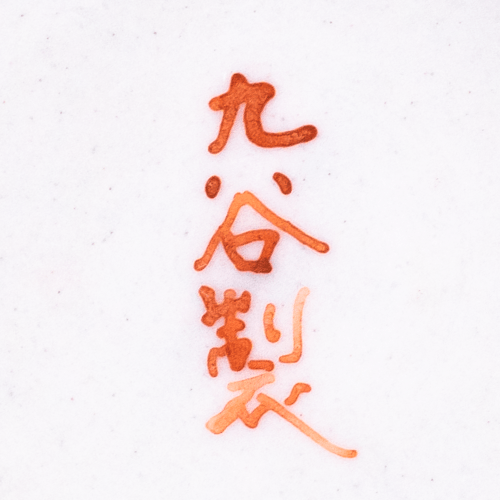
Kutani – another version of generic Kutani red mark that reads 九谷製 ‘Kutani-sei’ (Made in Kutani)
See examples on eBay →
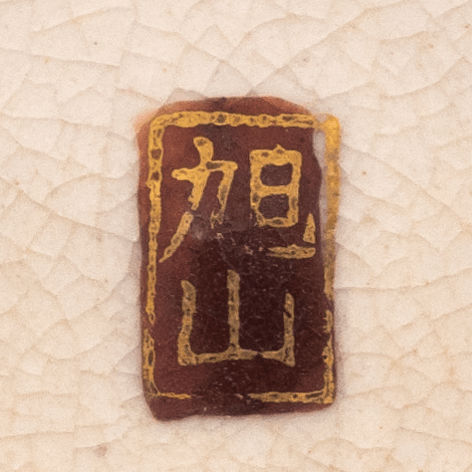
Kyokuzan – early 20th century Satsuma pottery marked ‘Kyokuzan’ 旭山
See examples on eBay →
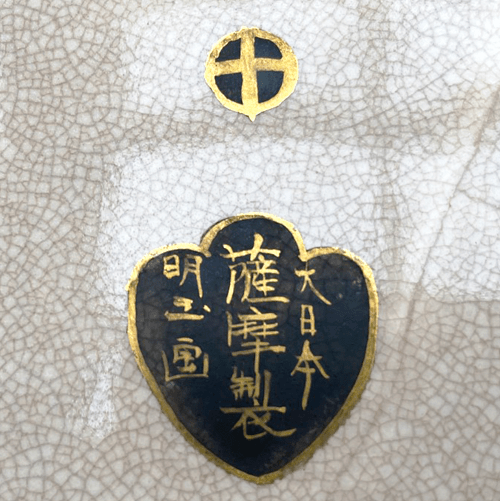
Meigyoku – marchio di ceramica dorata Satsuma su fondo nero con la scritta 大日本 薩摩製 明玉画 'Dai Nippon, Satsuma Sei, Meigyoku Ga' (Grande Giappone, fabbricato da Satsuma, dipinto da Meigyoku) e con sopra lo stemma di Shimazu; Periodo Meiji
See examples on eBay →
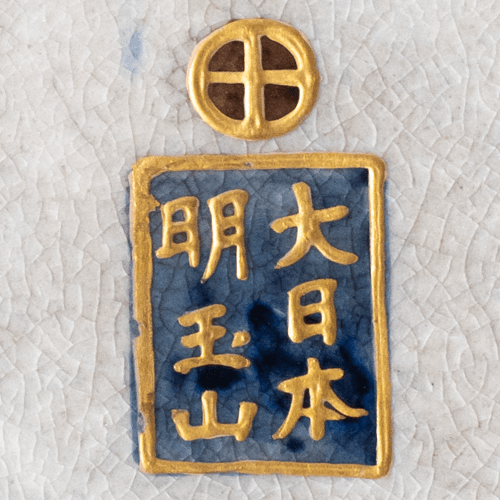
Meigyokuzan – fine quality Satsuma pottery with gilt rectangular mark on blue backround that reads 大日本 明玉山 ‘Dai Nippon, Meigyokuzan’ (Great Japan, Meigyokuzan) and with Shimazu crest above; Meiji period
See examples on eBay →
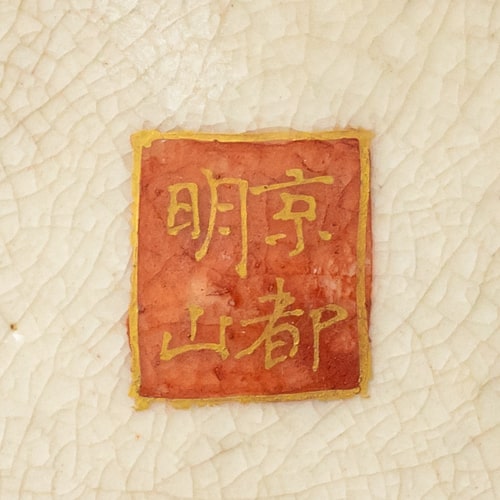
Meizan – Meiji period Satsuma pottery with gilt square mark on a red backround that reads 京都 明山 ‘Kyoto, Meizan’. Judging by the style, this doesn’t appear to be the mark of Yabu Meizan 藪 明山 (1853-1934) but a different decorator.
See examples on eBay →
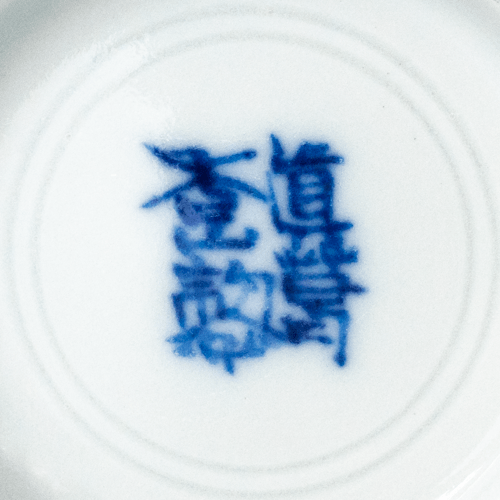
Miyagawa ‘Makuzu’ Kozan – 宮川香山 – underglaze blue mark that reads 真葛香山製 ‘Made by Makuzu Kozan’. There were four generations that used this mark throughout the first half of the 20th century – Makuzu Kozan I-IV.
See examples on eBay →
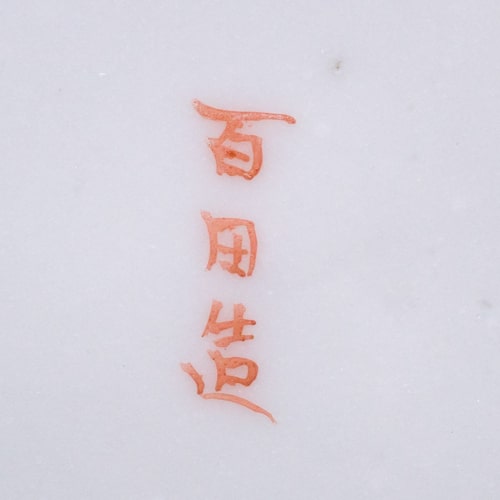
Momota – Porcellana kutani firmata 'Momota Zo' 百田造
See examples on eBay →
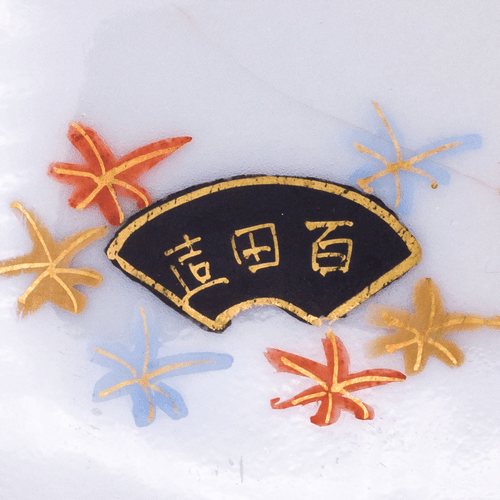
Momota – alternative 百田造 ‘Momota Zo’ Kutani porcelain mark inside a black fan-shaped background with gold border. Written from right to left. Early 20th century.
See examples on eBay →
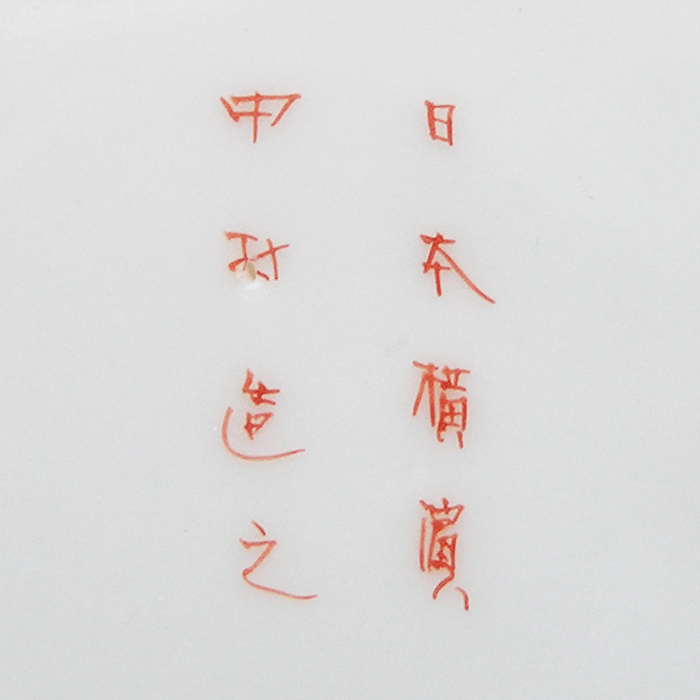
Nakamura Shuto I (1864-1928) – Porcellana kutani marchiata 日本橫濱中村造之 'Nippon Yokohama Nakamura Zo Kore'. Periodo taishō
See examples on eBay →
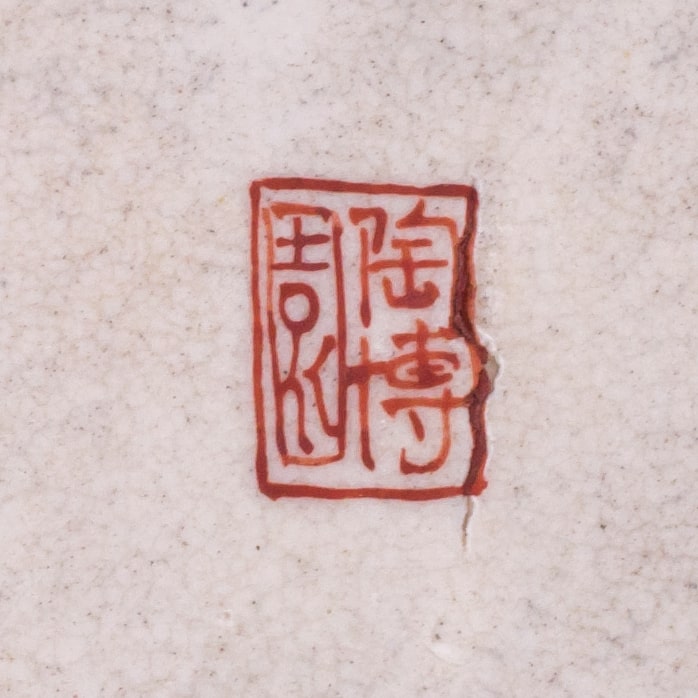
Naruse Seishi (成瀬誠志, 1845-1923) – nome dello studio firmato 'Tohakuen' 陶博園
See examples on eBay →
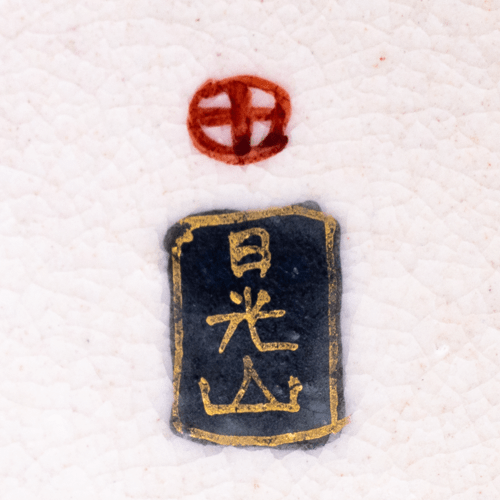
Nikkozan – Ceramica Satsuma firmata 'Nikkozan' 日光山 – marchio rettangolare in oro su sfondo nero con stemma Shimazu rosso sopra; all'inizio del XX secolo
See examples on eBay →
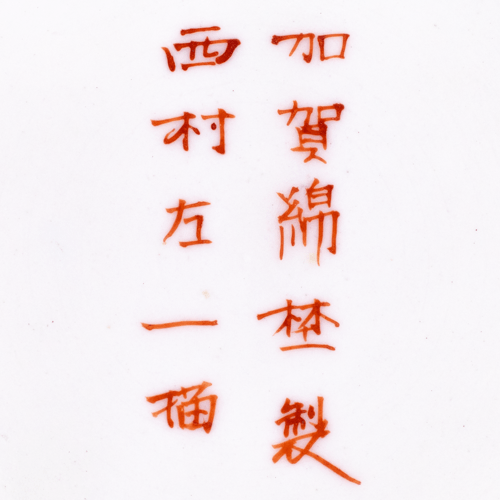
Nishimura Saichi 西村佐一 – Kutani porcelain iron red mark 加賀 綿野製 西村佐一描 ‘Kaga, Made by Watano, Painted by Nishimura Saichi’; Meiji period
See examples on eBay →
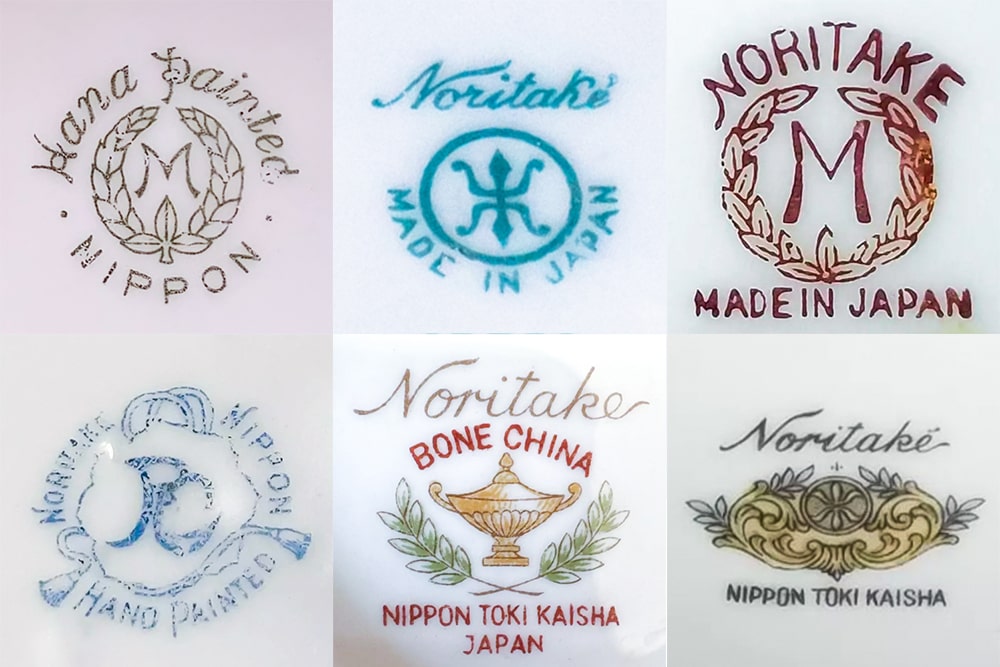
Variations of Noritake marks include wreath marks with letter M inside (Morimura brothers – original founders of the company), sometimes with the word ‘Noritake’ above but often only with words ‘Hand Painted’ above and ‘NIPPON’ below. Another commonly seen logo has a stylized ‘komaru’ symbol (which looks like a double trident) inside a circle with ‘Noritake’ above and ‘MADE IN JAPAN’ below. There are also Noritake Nippon marks with letters RC for ‘Royal Crockery’ and marks featuring the original Japanese name ‘Nippon Toki Kaisha’ (Japan Pottery Company). More modern marks also feature the words ‘BONE CHINA’, ‘Ivory China’ or ‘Fine China’. Please note that Noritake marks mentioned above were sometimes also faked by other studios so their presence doesn’t necessarily mean that your item is a genuine piece of Noritake porcelain.
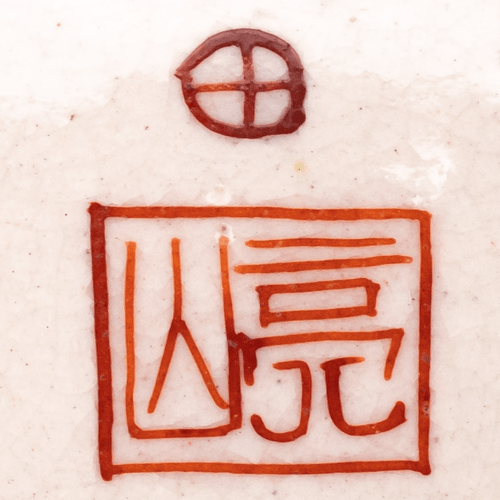
Ryozan – early 20th century Meiji-Taishō period Satsuma pottery with Shimazu crest and rectangular ‘Ryozan’ 亮山 mark
See examples on eBay →
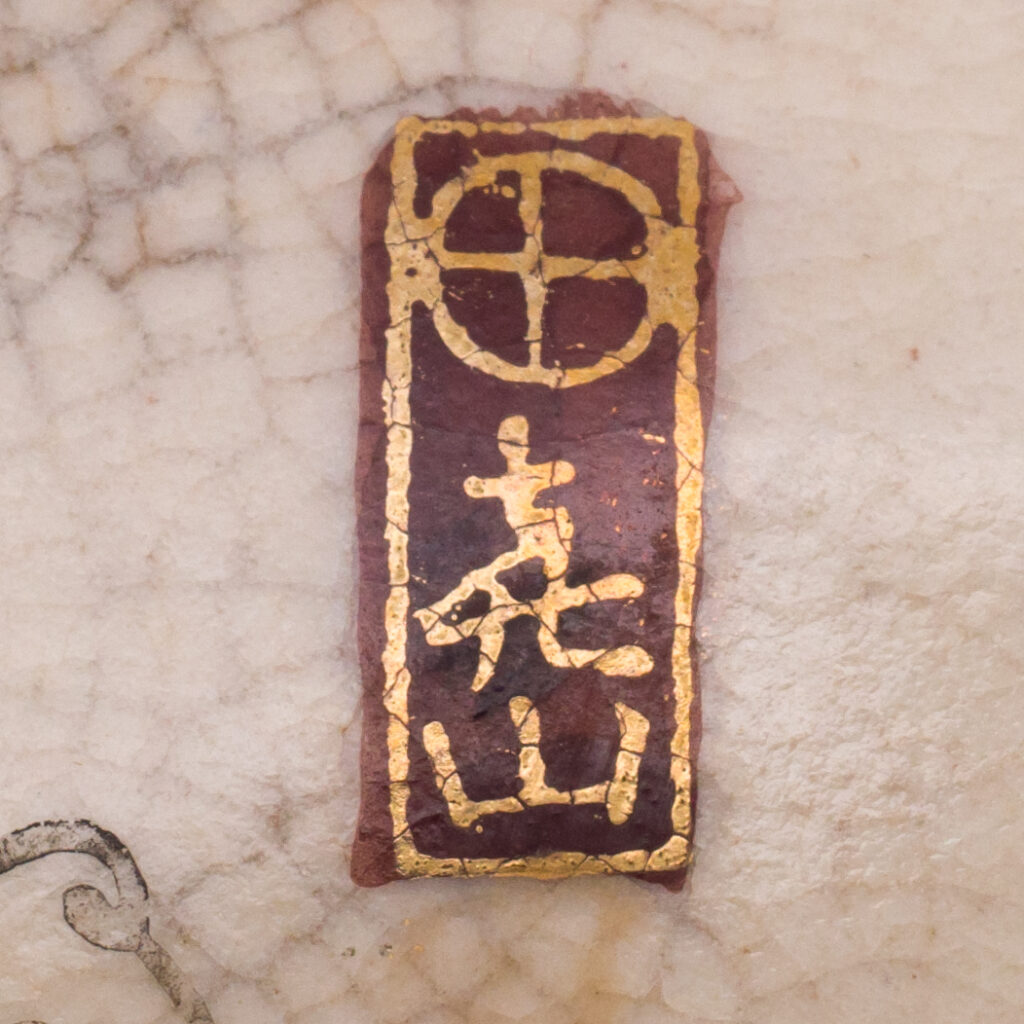
Ryozan – alternative, rectangular Ryozan Satsuma mark 亮山
See examples on eBay →
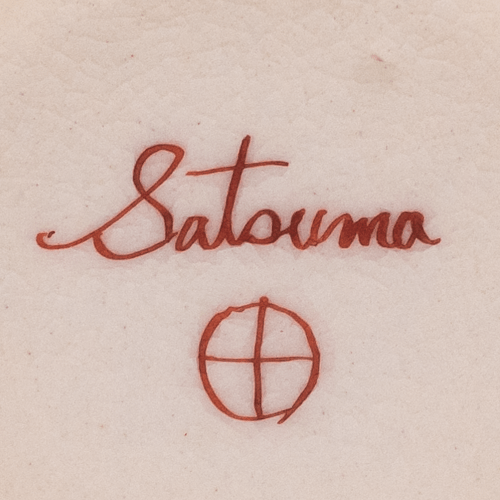
Satsuma – unusual mark with ‘Satsuma’ written in cursive and with Shimazu crest either below or above. Found on Soko China style Satsuma vases dating to the early 20th century.
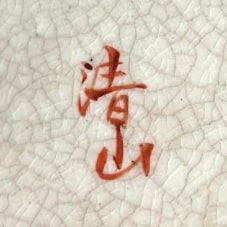
Seizan 清山 Satsuma (periodo meiji-Showa)
See examples on eBay →
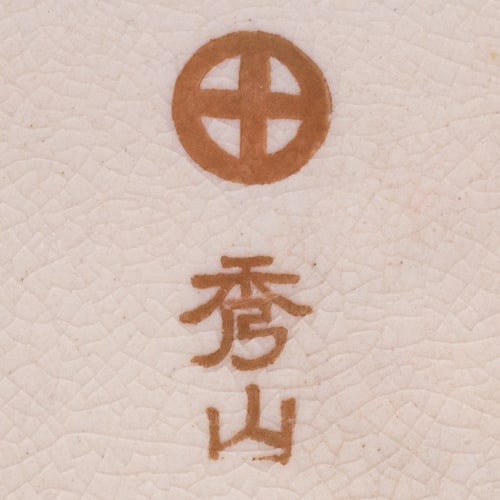
Shuzan Ceramica Satsuma marcata 秀山 (era Meiji-Taisho)
See examples on eBay →
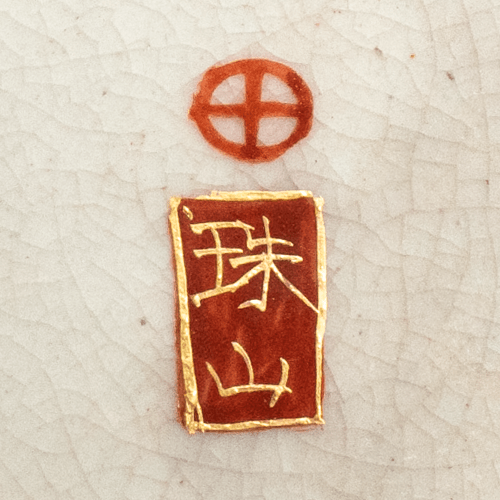
Shuzan – alternative Satsuma mark on red background that reads 珠山. Early 20th century
See examples on eBay →
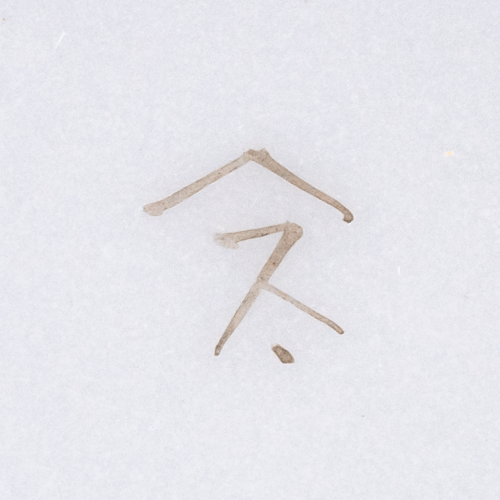
Suzuki Company – logo of this distributor is most often found in its printed form on post-WWII export pieces (sometimes also with the name 铃木 ‘Suzuki’ printed below). However, this handwritten version was found on a fully hand-painted pre-WWII tea set.
See examples on eBay →

Taizan Yohei 帯山与兵衛 – Ceramica satsuma in stile Kachō-ga contrassegnata con 大日本 帯山製 (Great Japan, Made by Taizan) in smalto nero a smalto. Meiji - prima era Taisho
Vedere examples on eBay →

Takadera – Meiji period Satsuma ware marked with red mon of the Shimazu clan and signed 大日本帝国 高寺造之 ‘Empire of Japan, Made by Takadera’.
See examples on eBay →
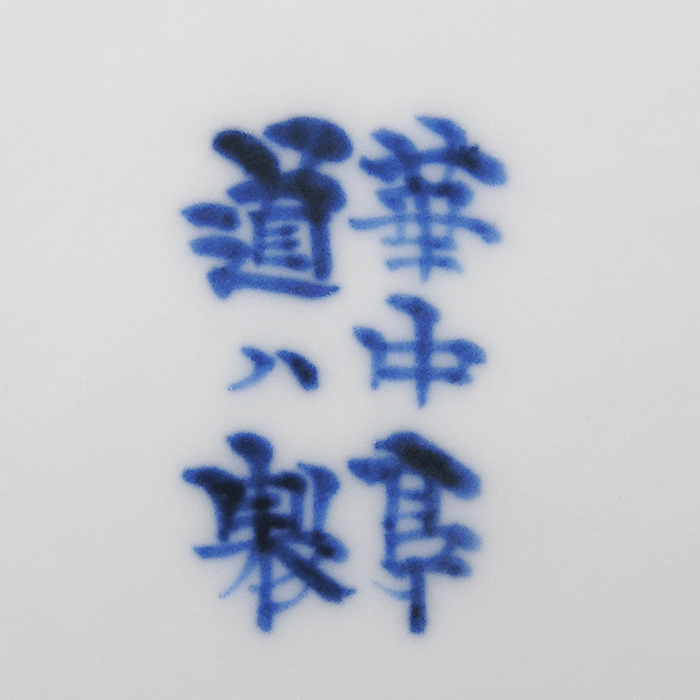
Takahashi Dohachi IV – 四代 高橋道八 – pseudonimo Kachutei – porcellana marchiata 華中亭道八製 'Kachutei Dohachi Sei'. Studio Kyo yaki / kiyomizu-ware dal periodo Edo. Takahashi Dohachi di quarta generazione successe a suo padre nel 1874.
See examples on eBay →
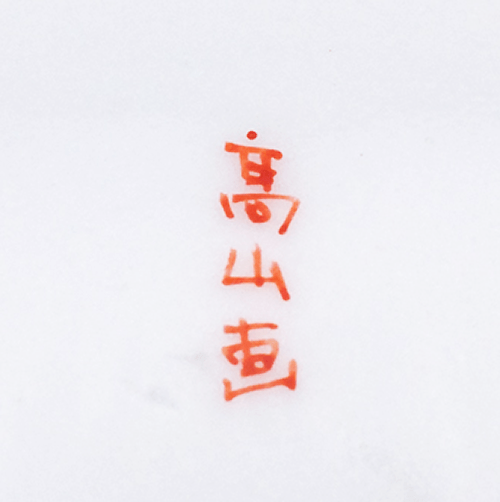
Takayama – iron red Kutani mark that reads 高山画 ‘Takayama-ga’ (painted by Takayama); early 20th century
See examples on eBay →
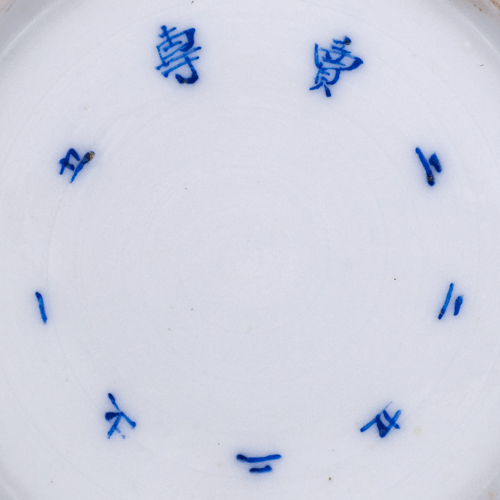
Takeuchi Chubei – numeri di brevetto come questo sono caratteristici della porcellana (e degli articoli in metallo) di Takeuchi Chubei. Questo esempio è in blu sottosmalto ma più comunemente sono scritti in smalti neri o rossi soprasmalto, spesso accompagnati dal nome dell'artista 竹内忠兵衛 e dalla scritta 許特賣專 “permesso di vendita esclusivo” o “rivenditore di brevetti con licenza”; Periodo Meiji – Taishō
See examples on eBay →
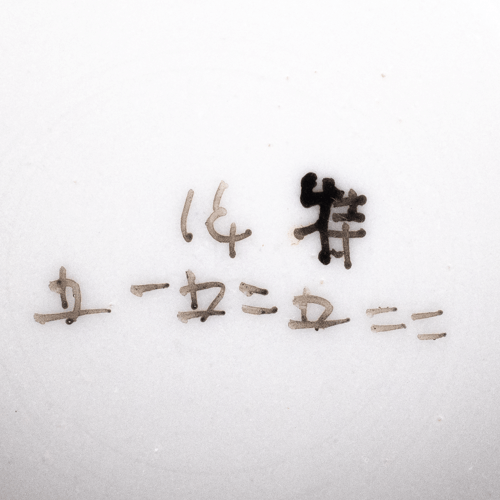
Takeuchi Chubei – forma più caratteristica del marchio di brevetto mostrato sopra – questo esempio è in smalto nero sovrasmaltato; Meiji - Periodo taishō
See examples on eBay →
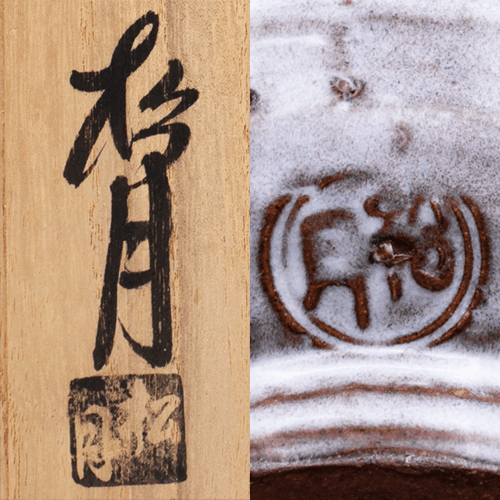
Tamamura Shogetsu 玉村松月 – Hagi ware (萩焼, Hagi-yaki) stamped 松月 ‘Shogetsu’ inside double circles. 20th century
See examples on eBay →
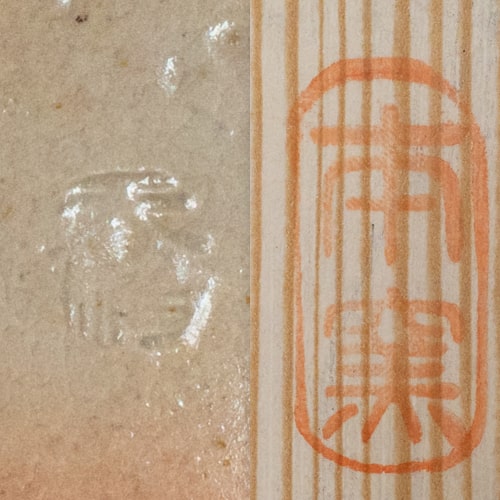
Tanga Hirose 広瀬淡雅 of Tenpozan Hon Kiln 天鵬山 本窯, part of Tenpozan Tsubaki Kiln 天鵬山 椿窯 – modern Japanese Hagi ware (萩焼, Hagi-yaki). Impressed kiln mark and oval red seal from the original storage box.
See examples on eBay →
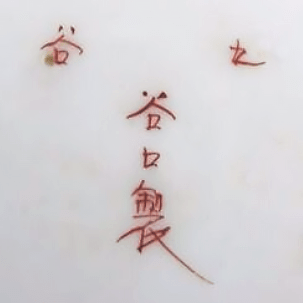
Taniguchi – porcellana marchiata 九谷 谷口製 'Kutani Taniguchi Sei' – realizzata da Kichijiro Taniguchi. Azienda attiva dal 1875 al 1954.
See examples on eBay →

Tashiro – rectangular iron red and gilt mark that reads 大日本 九谷 田代造 ‘Great Japan, Kutani, Made by Tashiro. Early 20th century
See examples on eBay →

Tashiro Monzaemon (1816-1900) – marchio blu sottosmalto 'Dai Nippon Hichōzan Shinpo zō' 大日本 肥碟山信甫造
See examples on eBay →
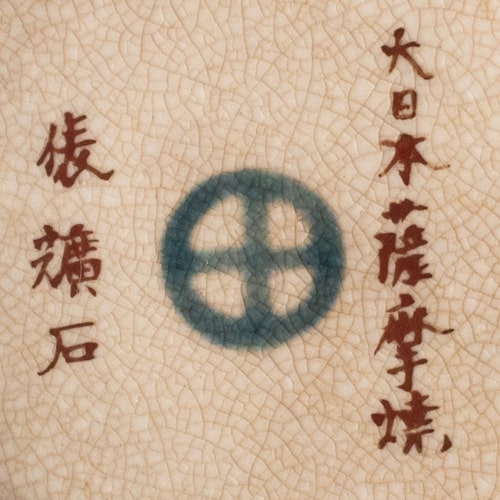
Tawara Koseki – 19th century gosu blue Satsuma ware signed 大日本 薩摩燒 俵兤石 ‘Great Japan, Satsuma ware, Tawara Koseki’.
See examples on eBay →
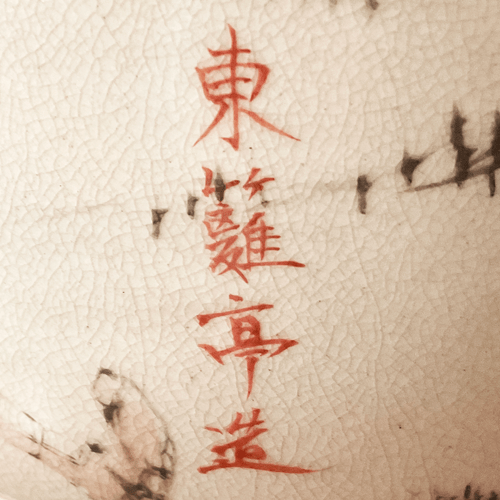
Toritei – segno rosso di ferro sulla ceramica Awata ware Satsuma che recita 'Toritei Zo' 東籬亭造 – Realizzato da Toritei; Periodo Meiji
See examples on eBay →
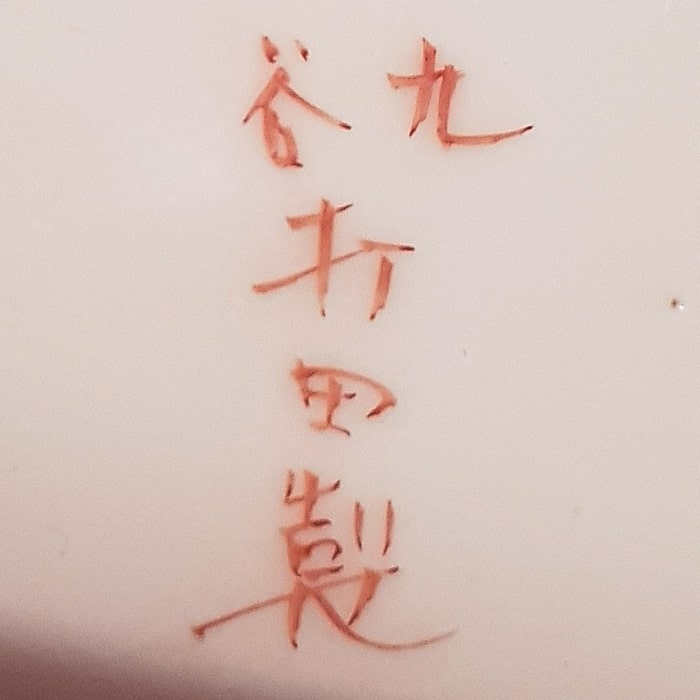
Uchida Porcellana kutani marchiata “Kutani Uchita Sei” 九谷 打田製
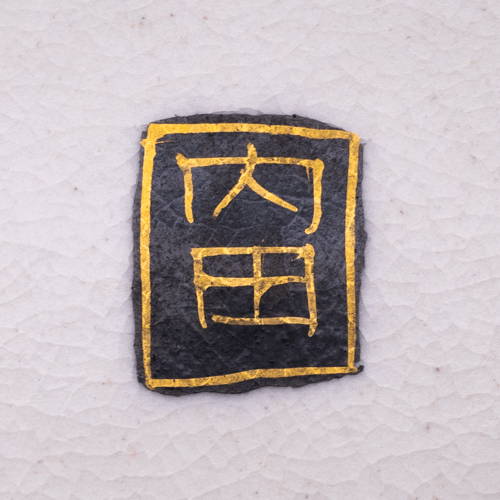
Uchida – Ceramica satsuma marcata in oro su sfondo nero 'Uchida' 内田 Periodo taishō
See examples on eBay →
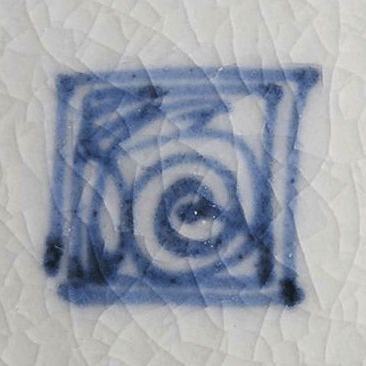
Uzu-fuku (also uzufuku or uzu-huku) 渦福 - marchio trovato su Kakiemon e altri esempi di porcellane di Arita. Periodo Edo
See examples on eBay →
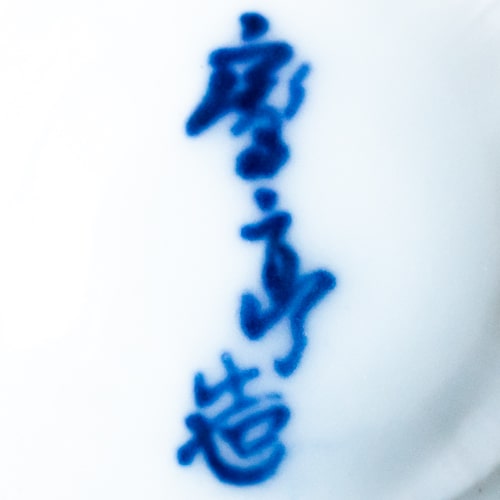
Wake Kitei 和気亀亭 – Kyoto based potter active during the late 19th century, Meiji period. Underglaze blue mark 亀亭造 ‘Made by Kitei’ found on the bottom of a teapot cover.
See examples on eBay →
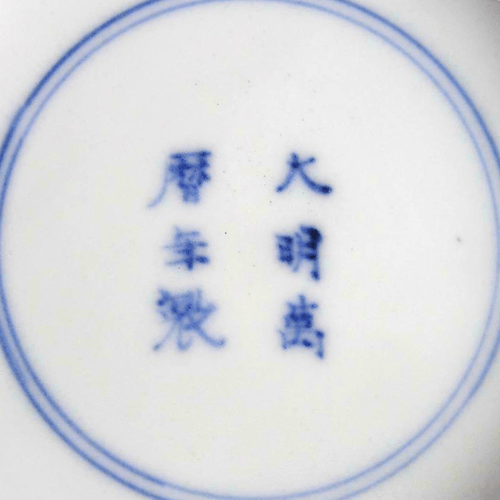
Wanli – segno del regno di Wanli a sei caratteri cinese apocrifo in blu sottosmalto all'interno di doppi cerchi; si legge 大明萬曆年製 'Dai Min manreki nensei' in Kanji; trovato su esempi di Arita Imari del periodo Edo e Meiji
See examples on eBay →
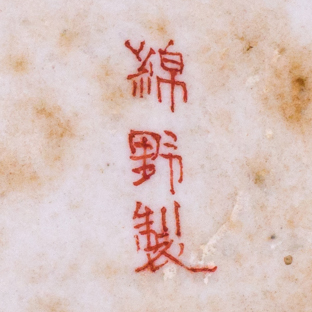
Watano Trading Company “Watano Sei” 綿野製
See examples on eBay →
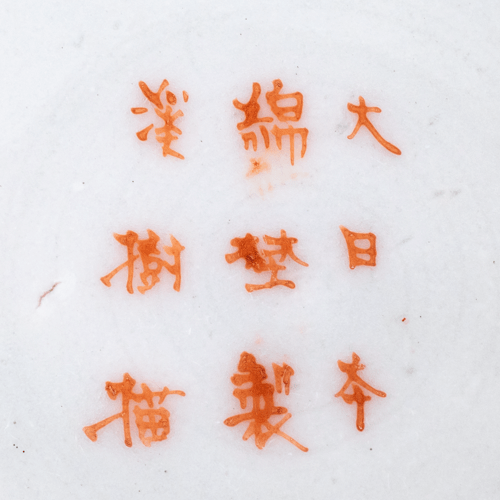
Watano – marchio alternativo Kutani con nome scritto come 綿埜製 risalente al periodo di Watano Genuemon (綿野 源右衛門), fine XIX secolo
See examples on eBay →
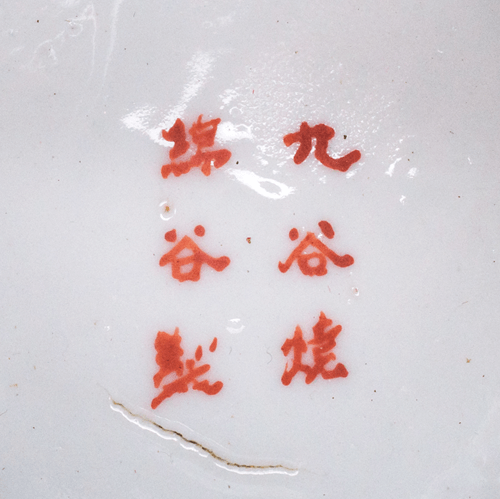
Wataya – Porcellana kutani marcata 九谷造綿谷製 'Kutani Zo Wataya Sei' – Kutani Prodotto da Wataya – probabilmente Wataya Heibei (綿谷平兵衛), Periodo Meiji
See examples on eBay →
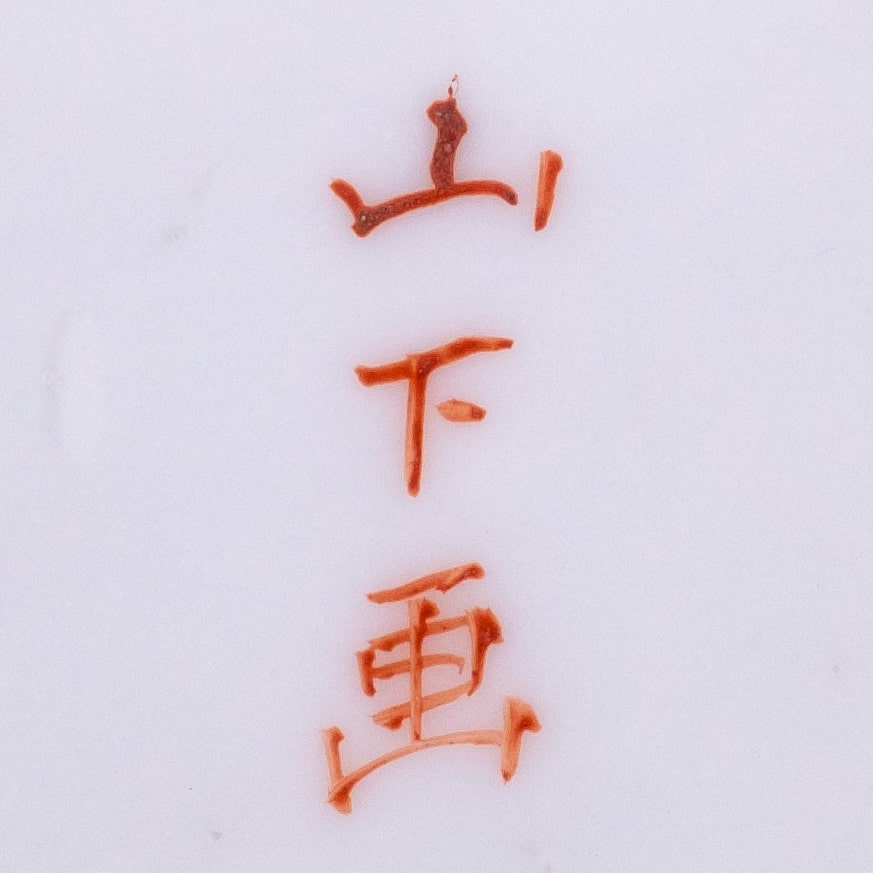
Yamashita Marchio in porcellana Kutani 山下画 “Yamashita Ga” – dipinto da Yamashita
See examples on eBay →
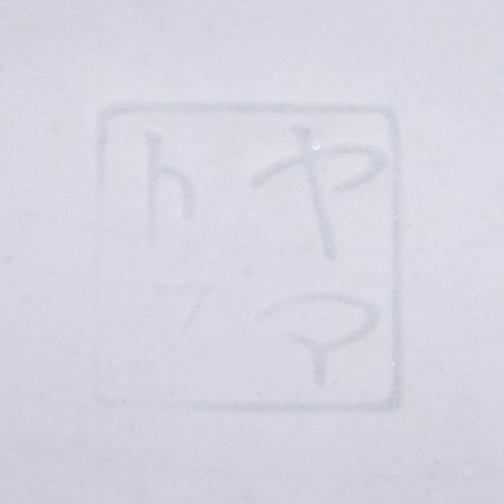
Yamatoku timbro impresso nel forno ヤマトク
See examples on eBay →
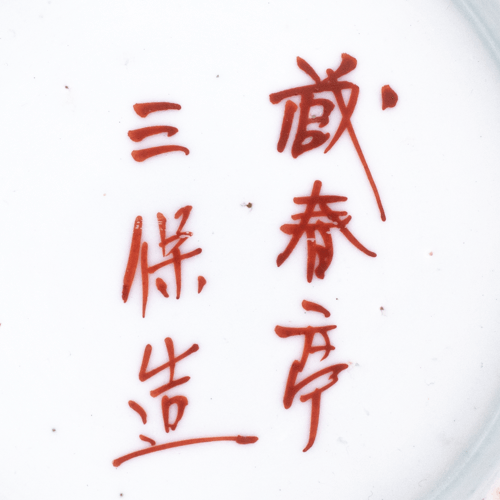
Yojibe Hisatomi – iron red six-character mark that reads 蔵春亭三保造 ‘Zoshuntei Sanpo Zo’; late Edo period
See examples on eBay →

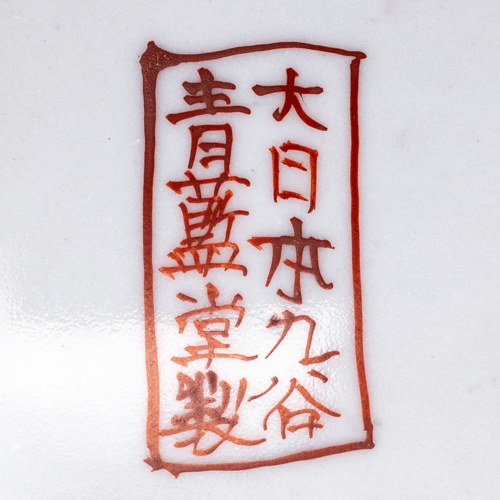

I commenti sono chiusi.